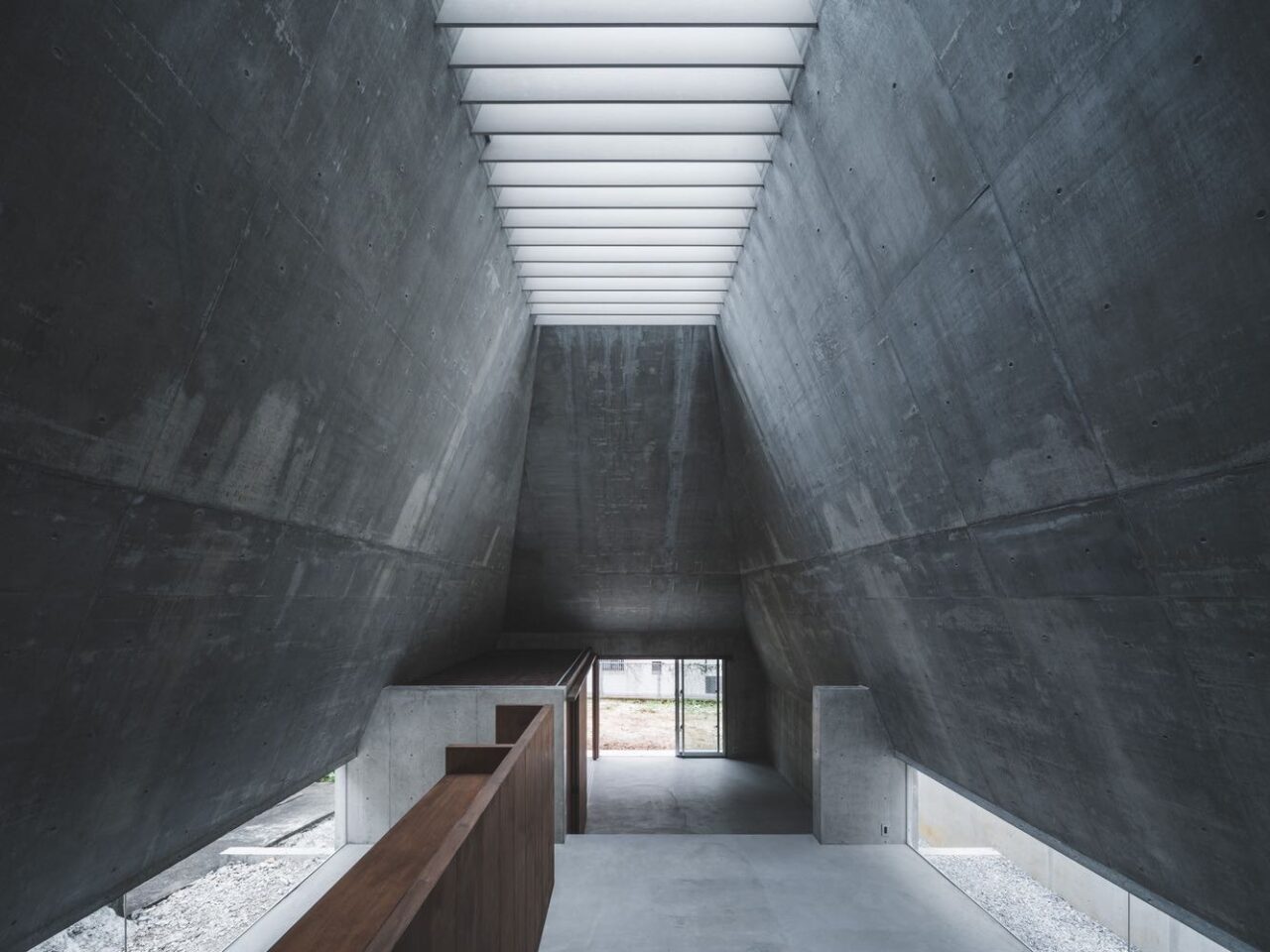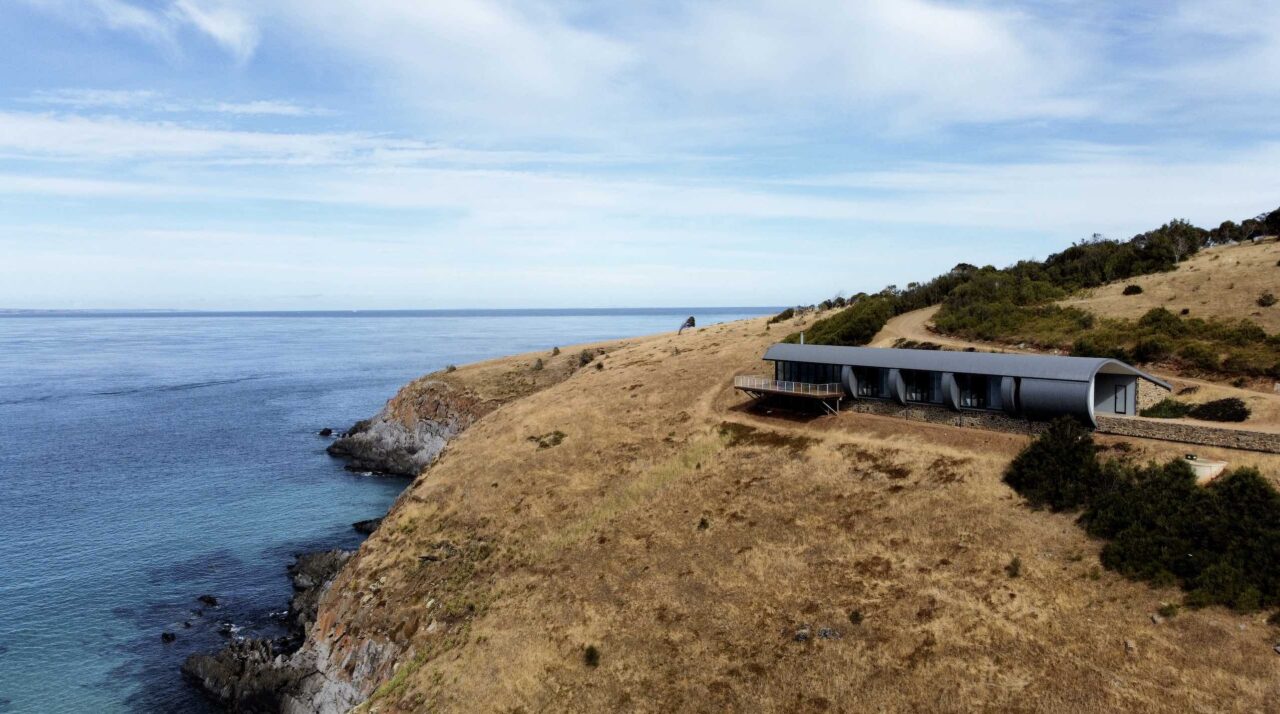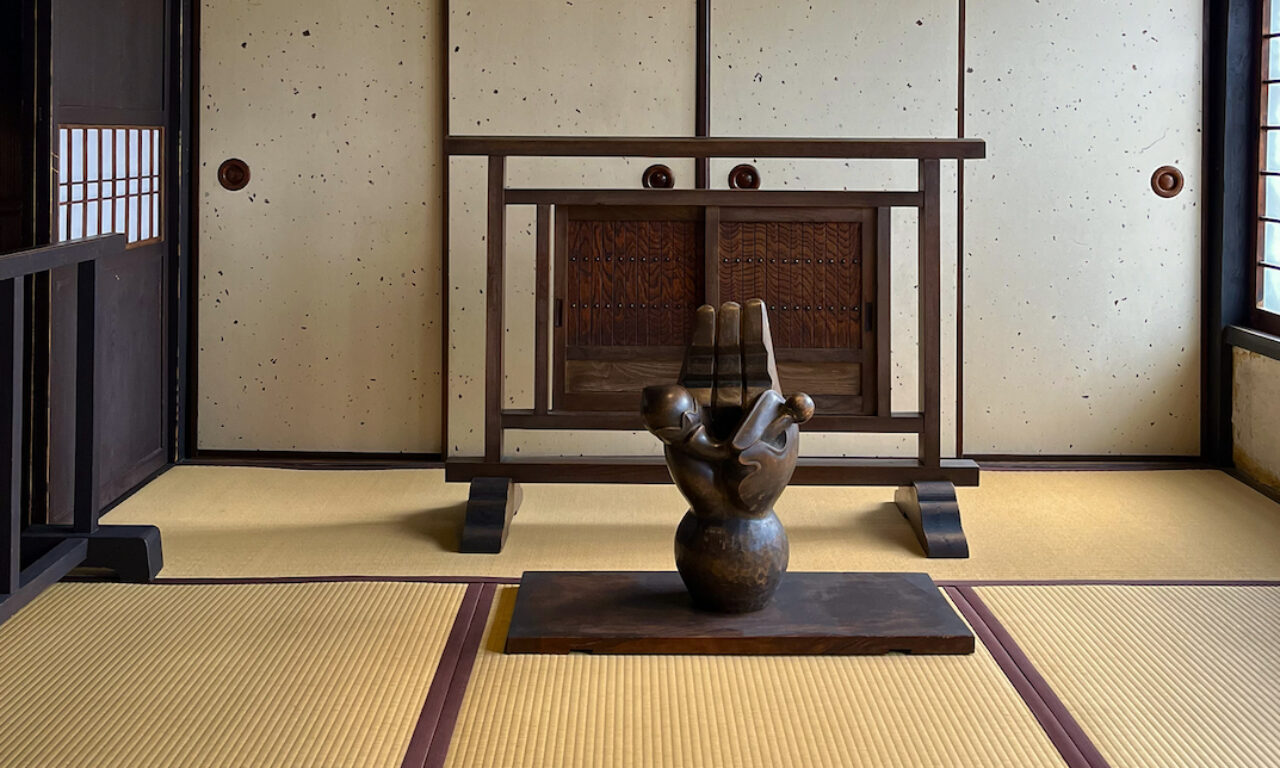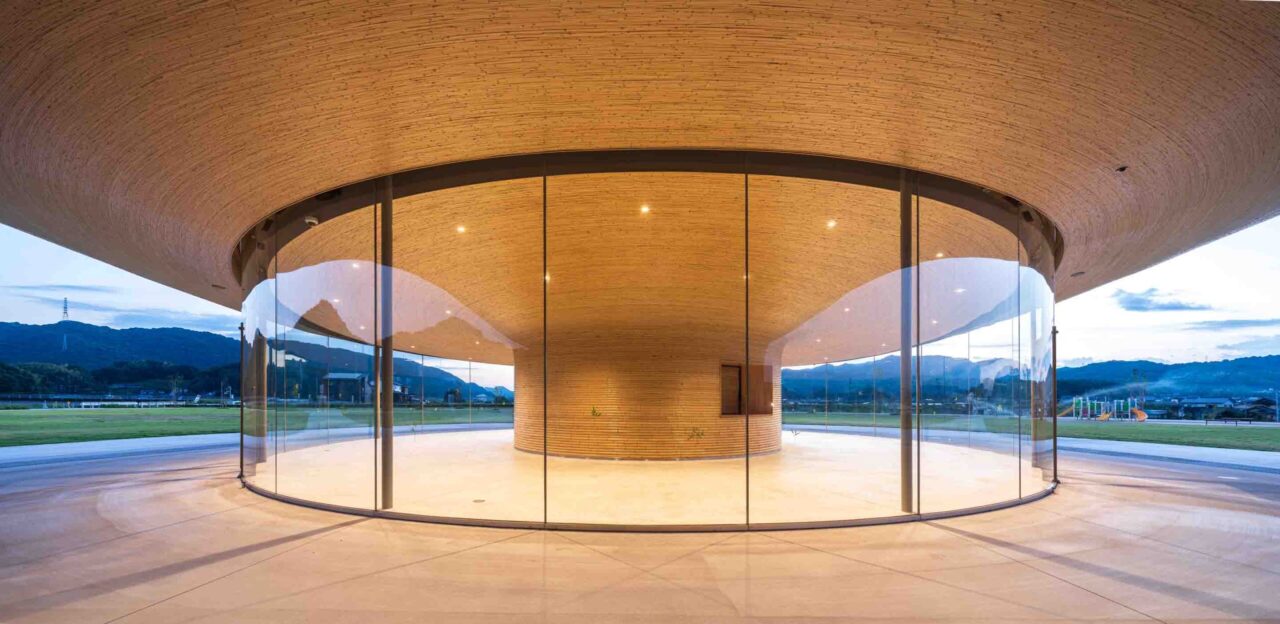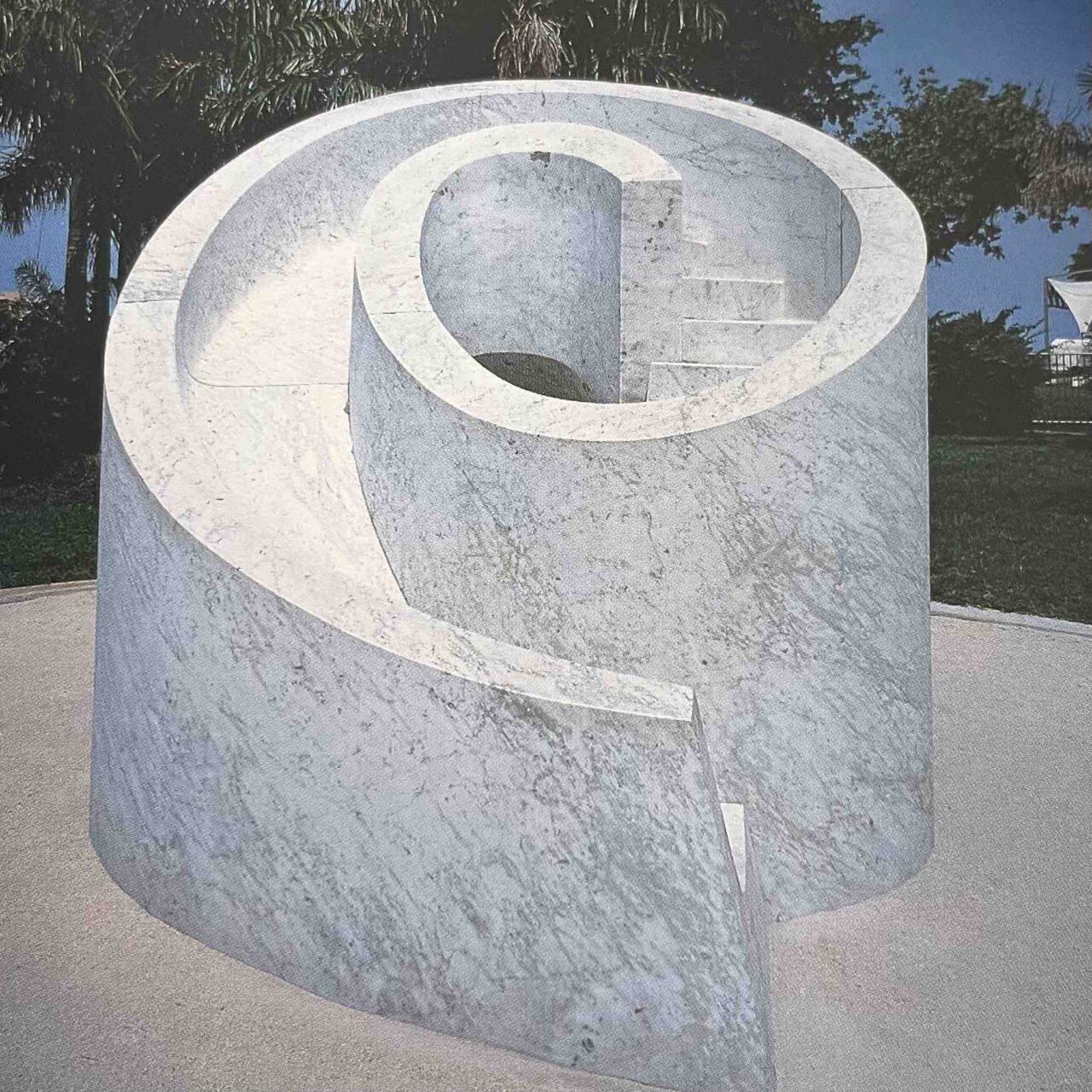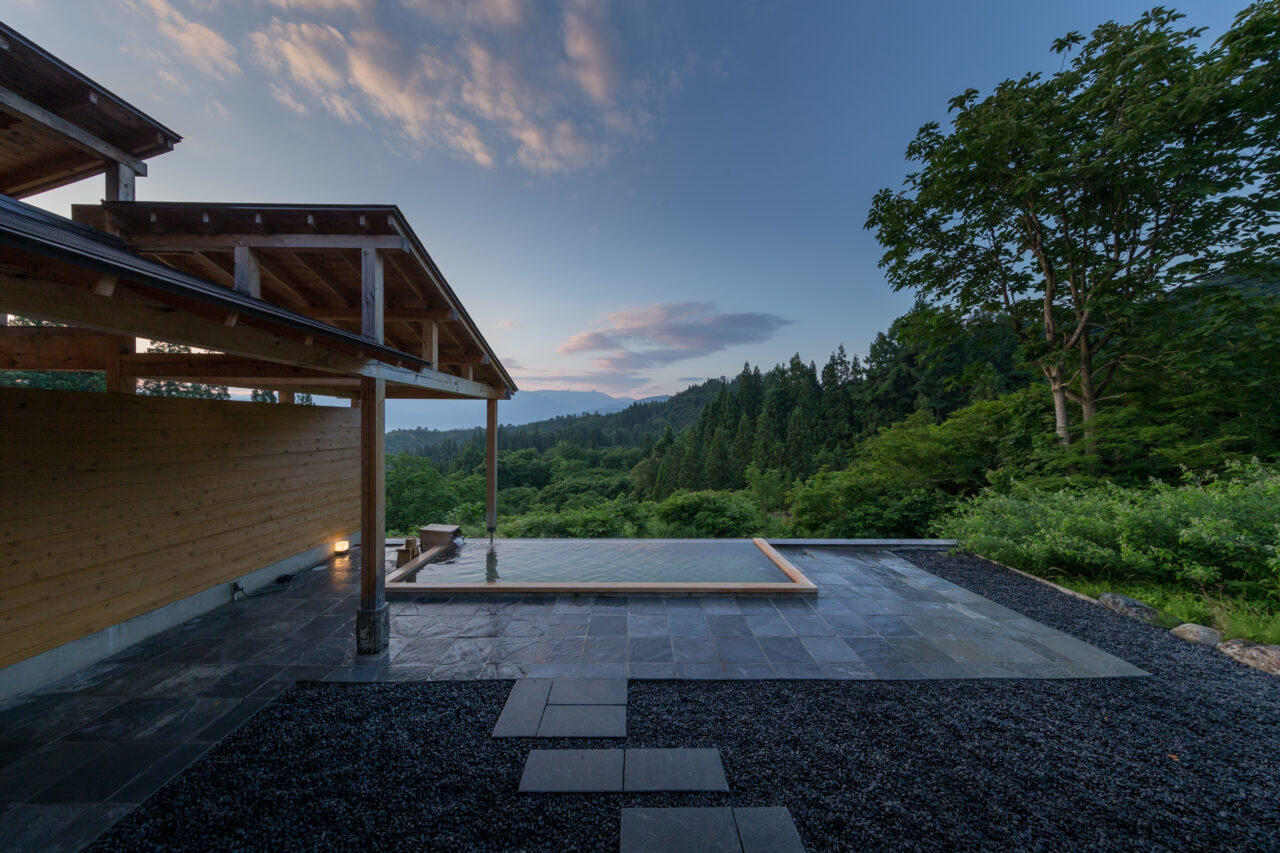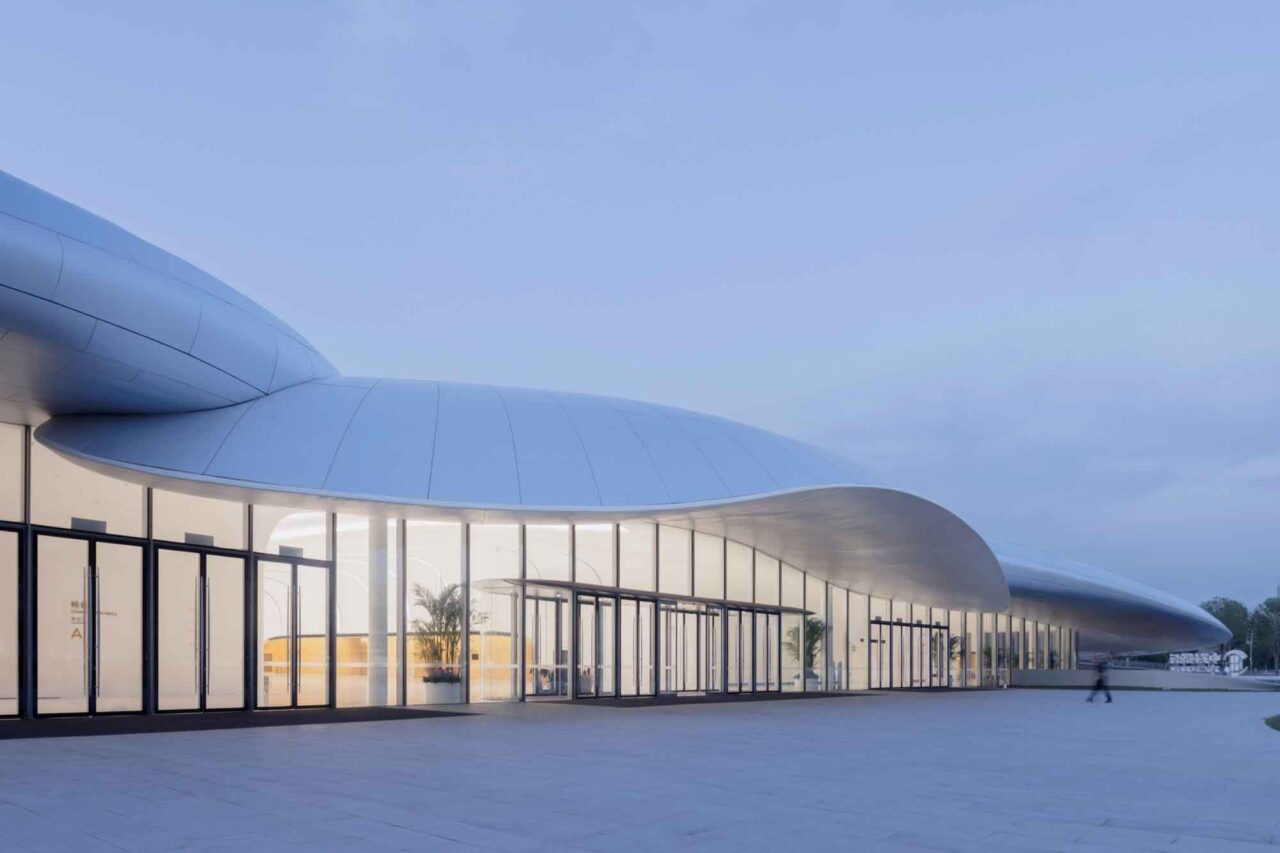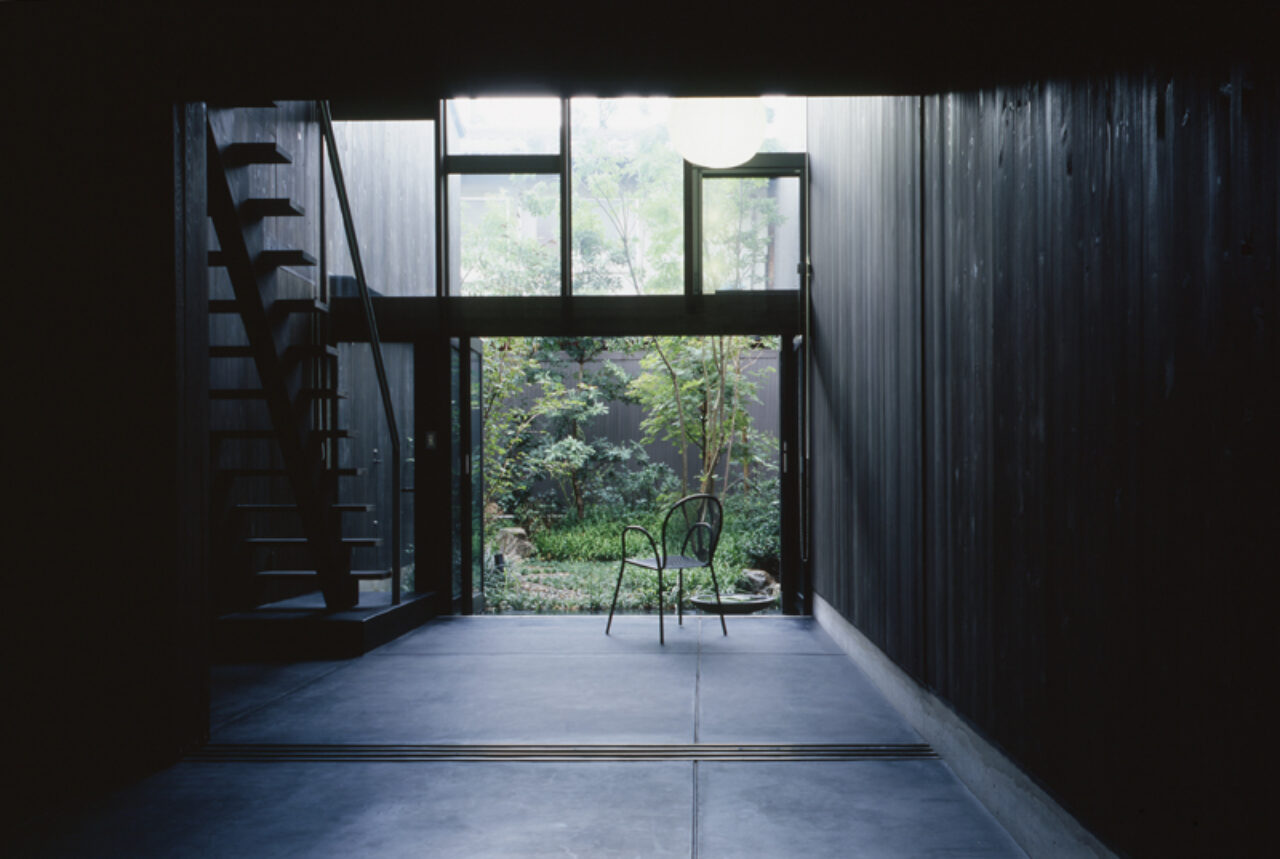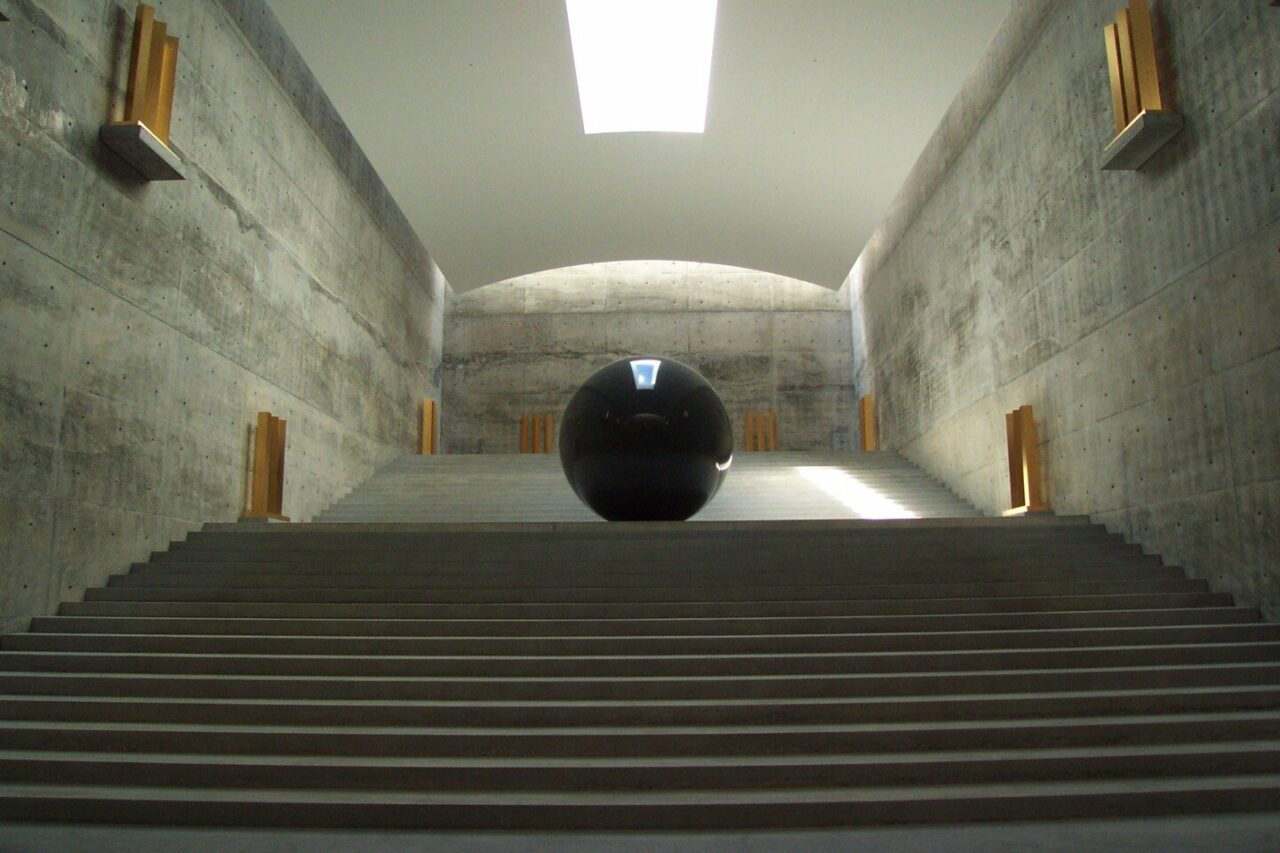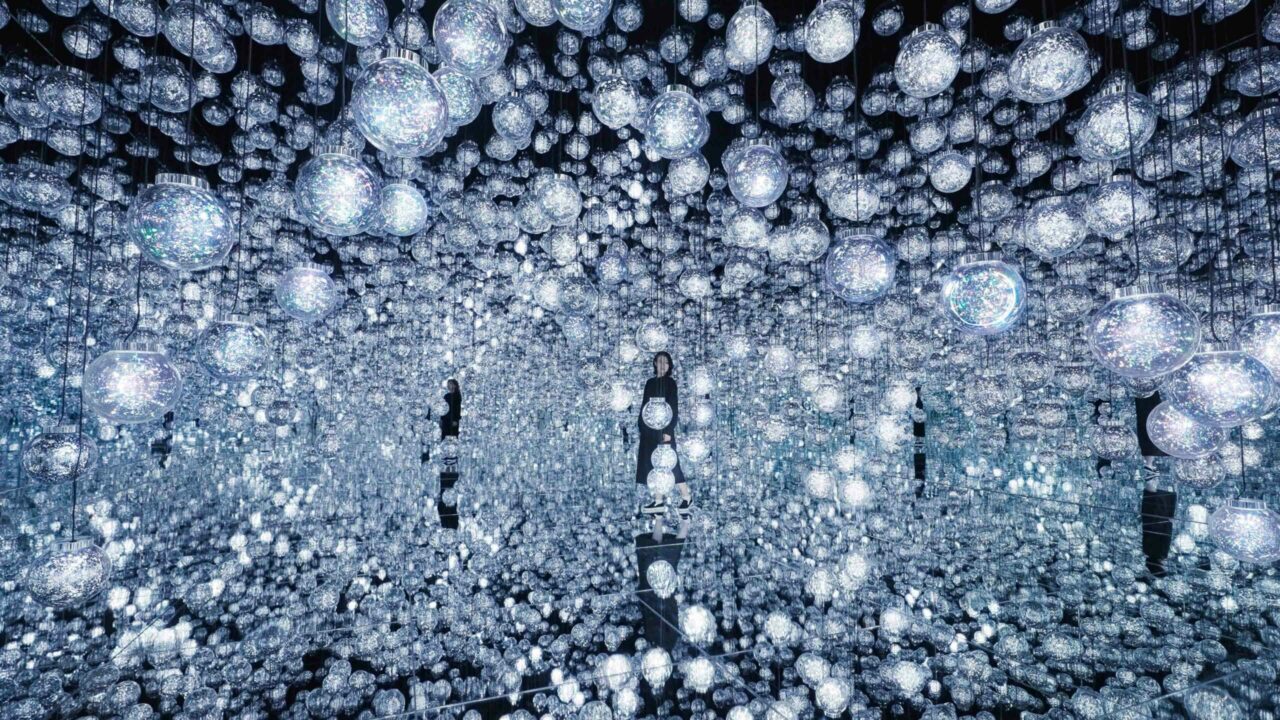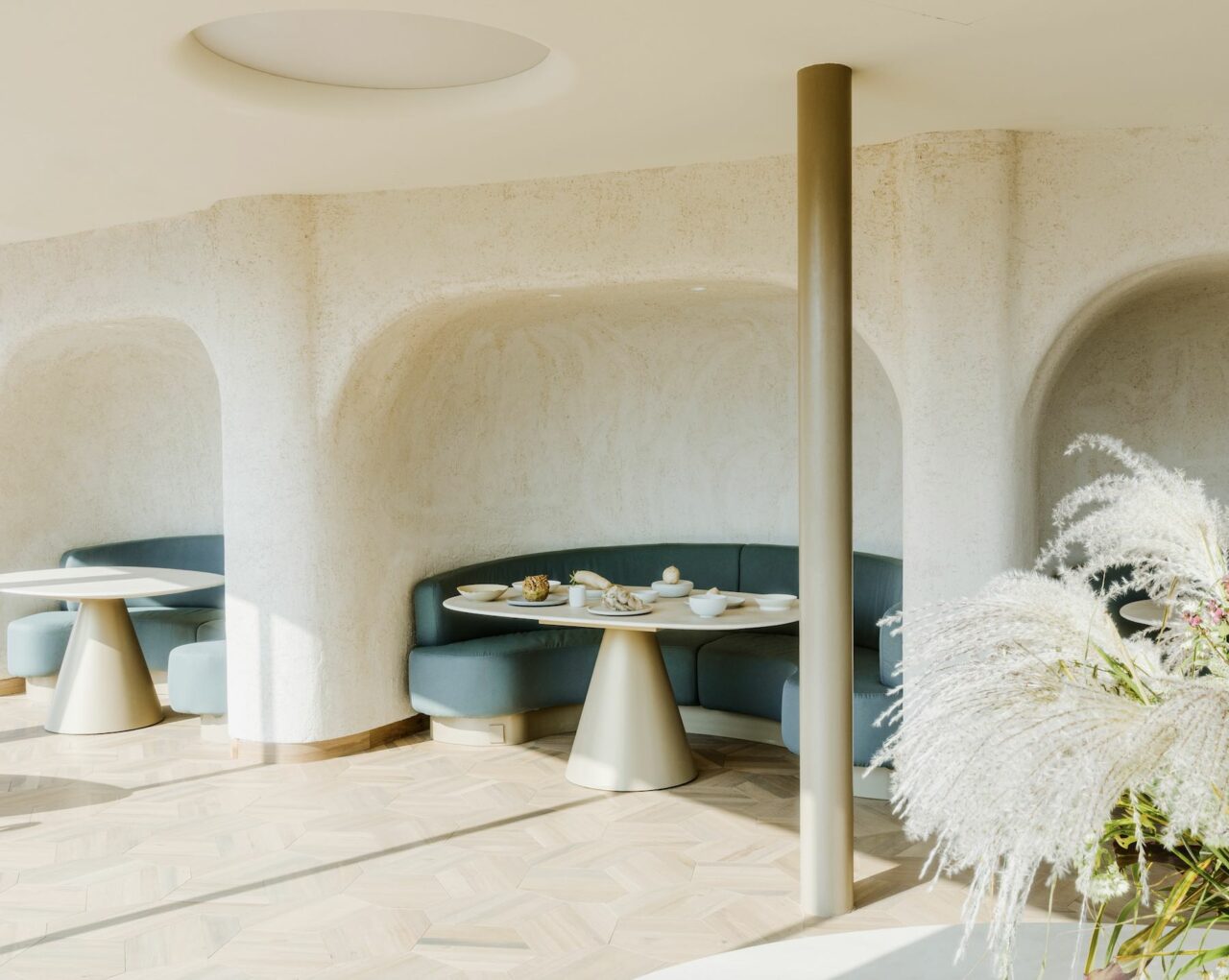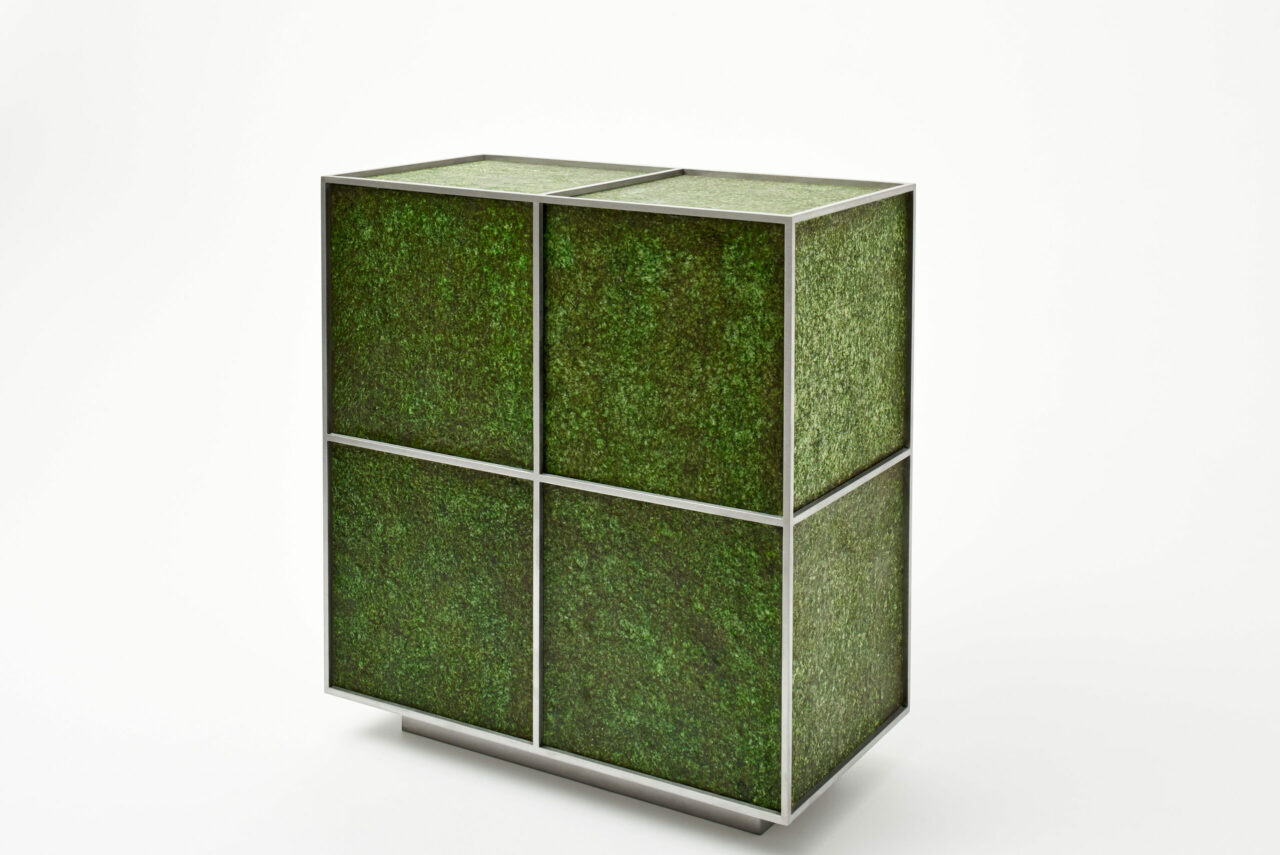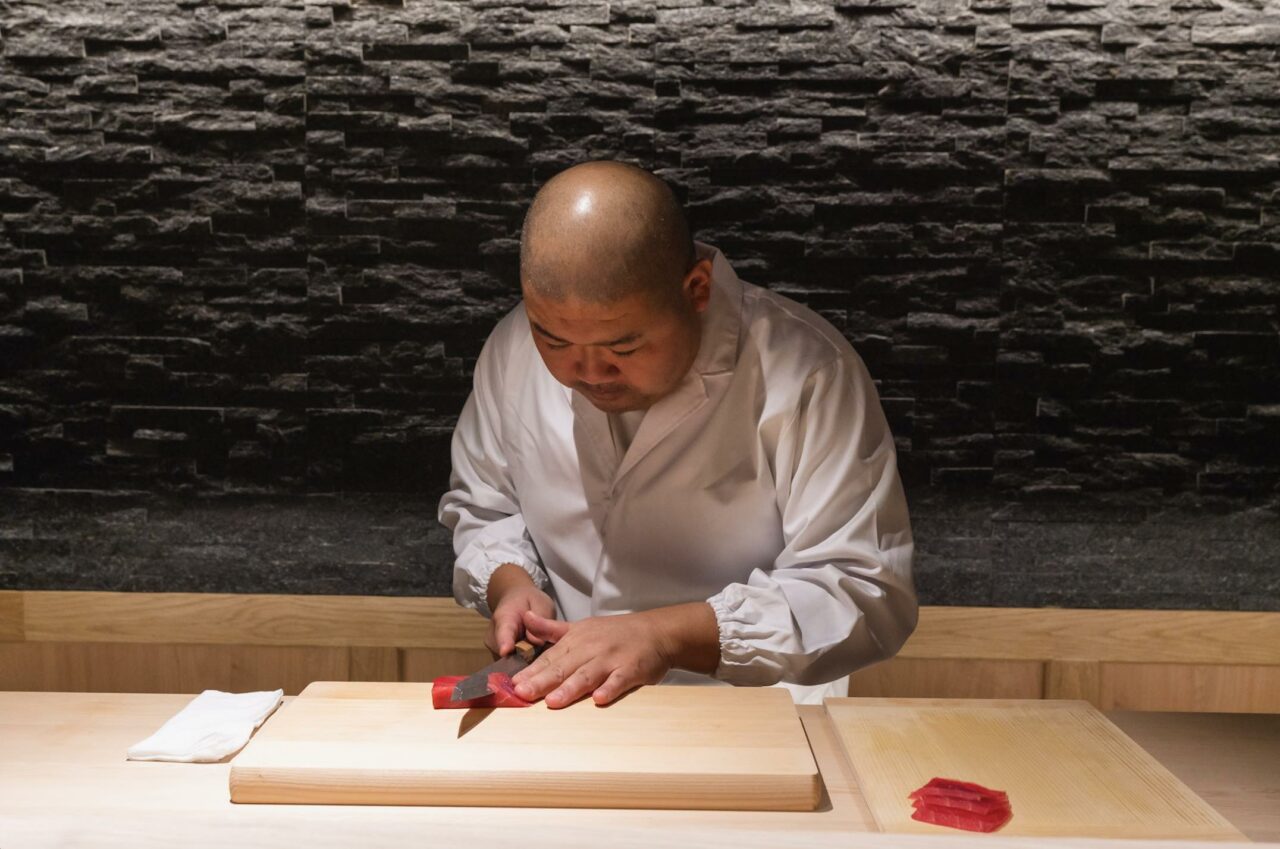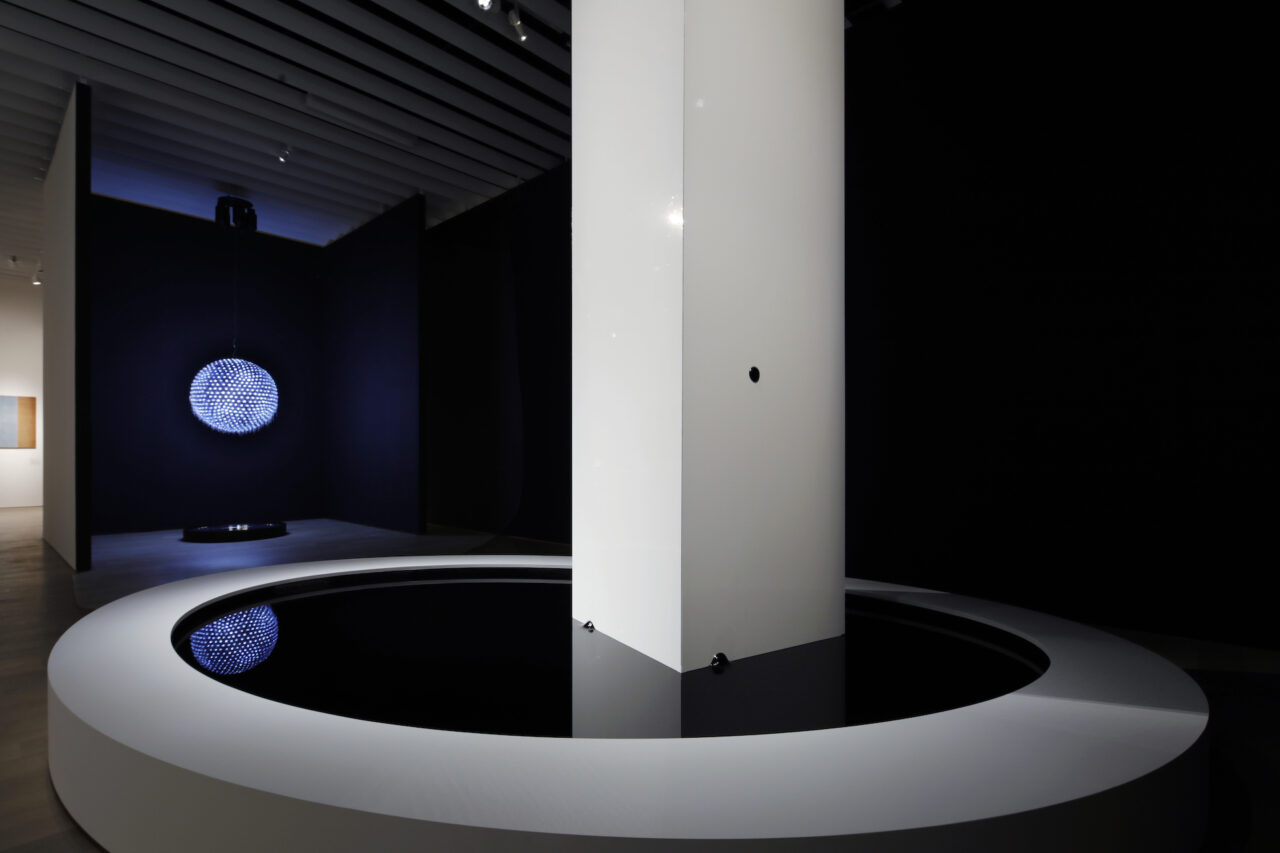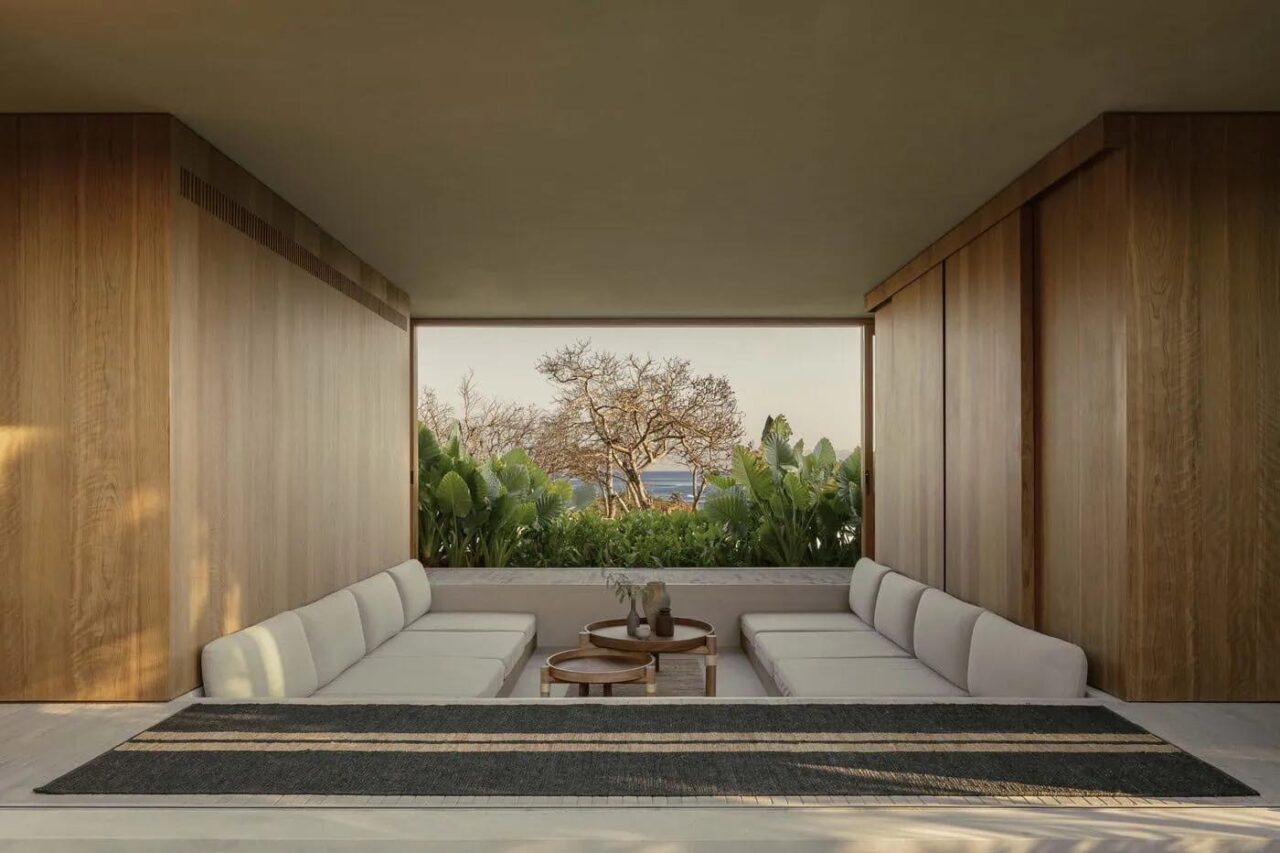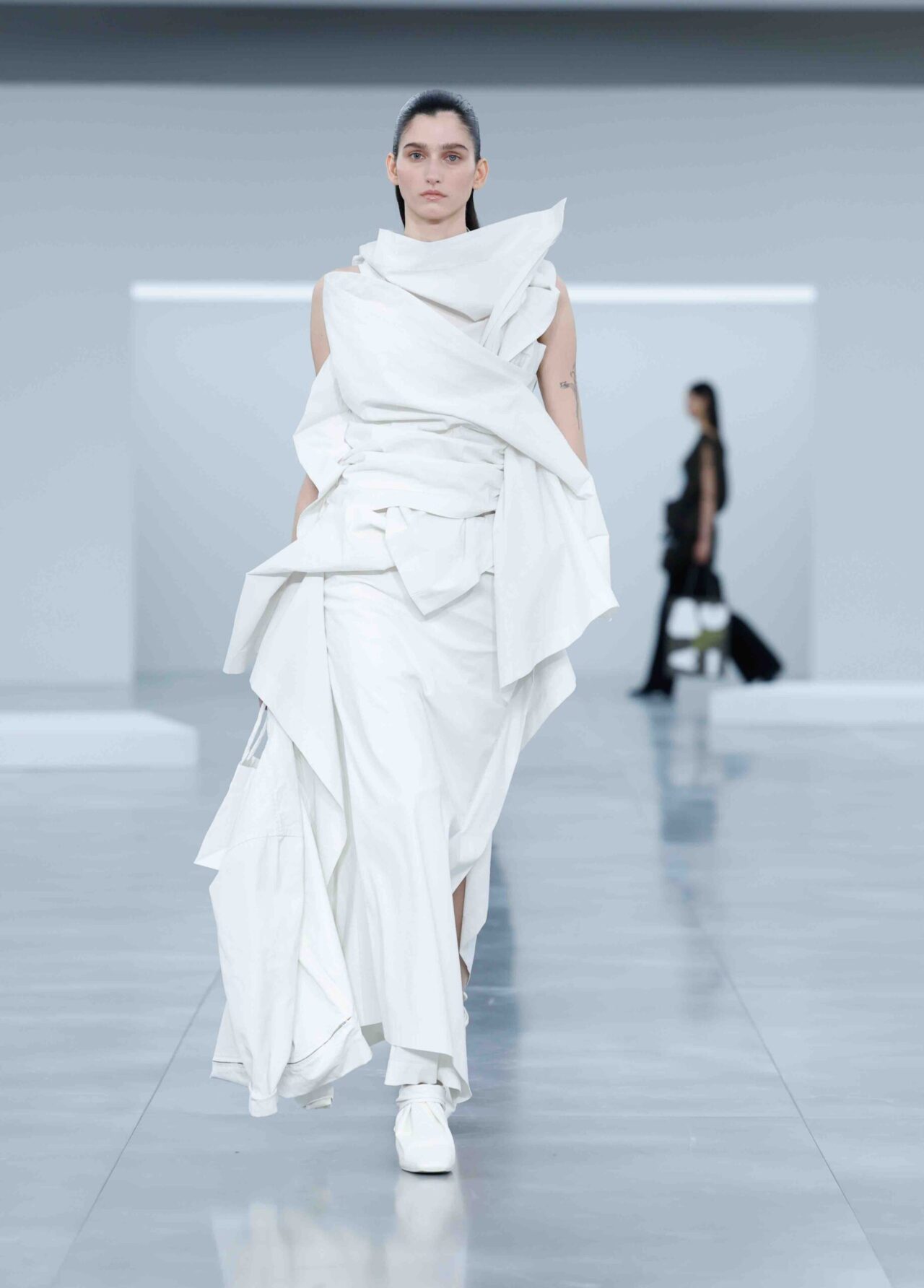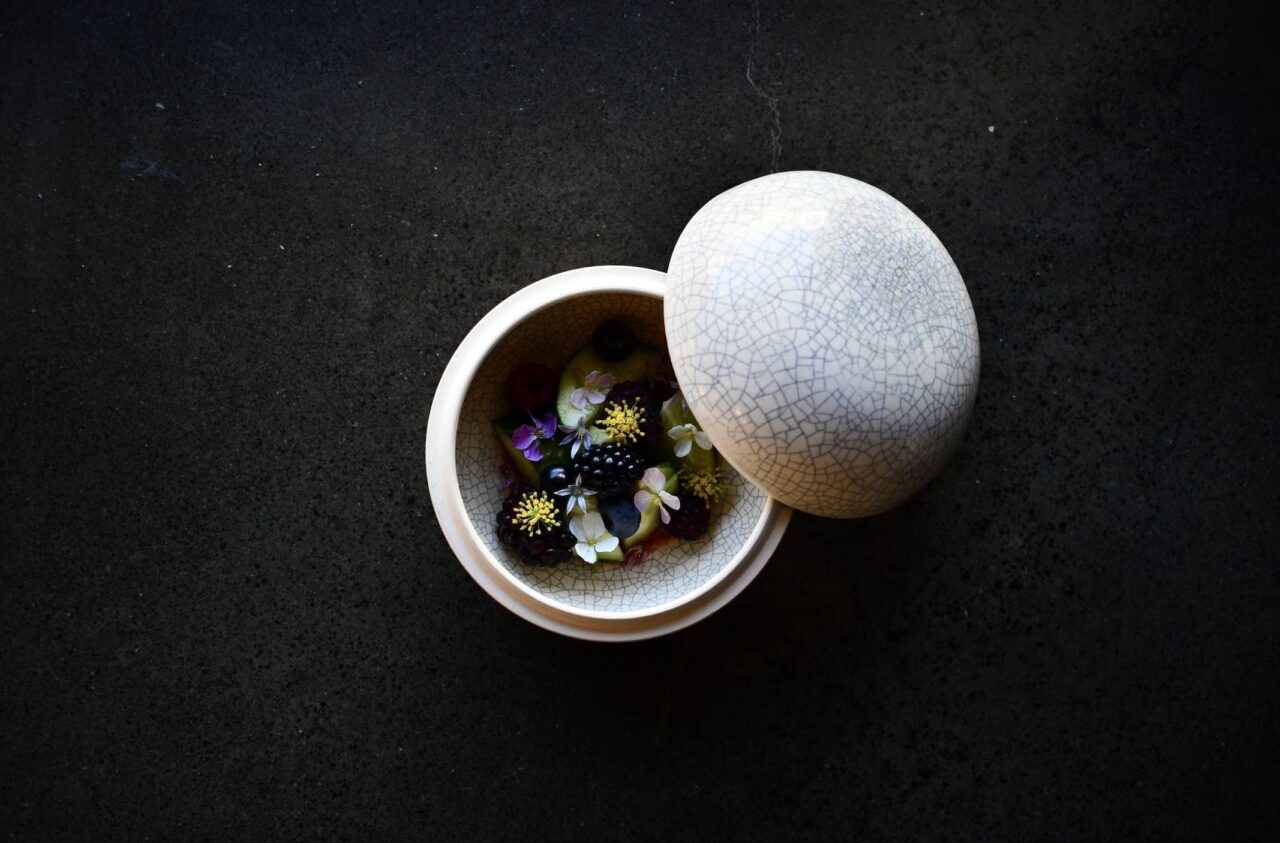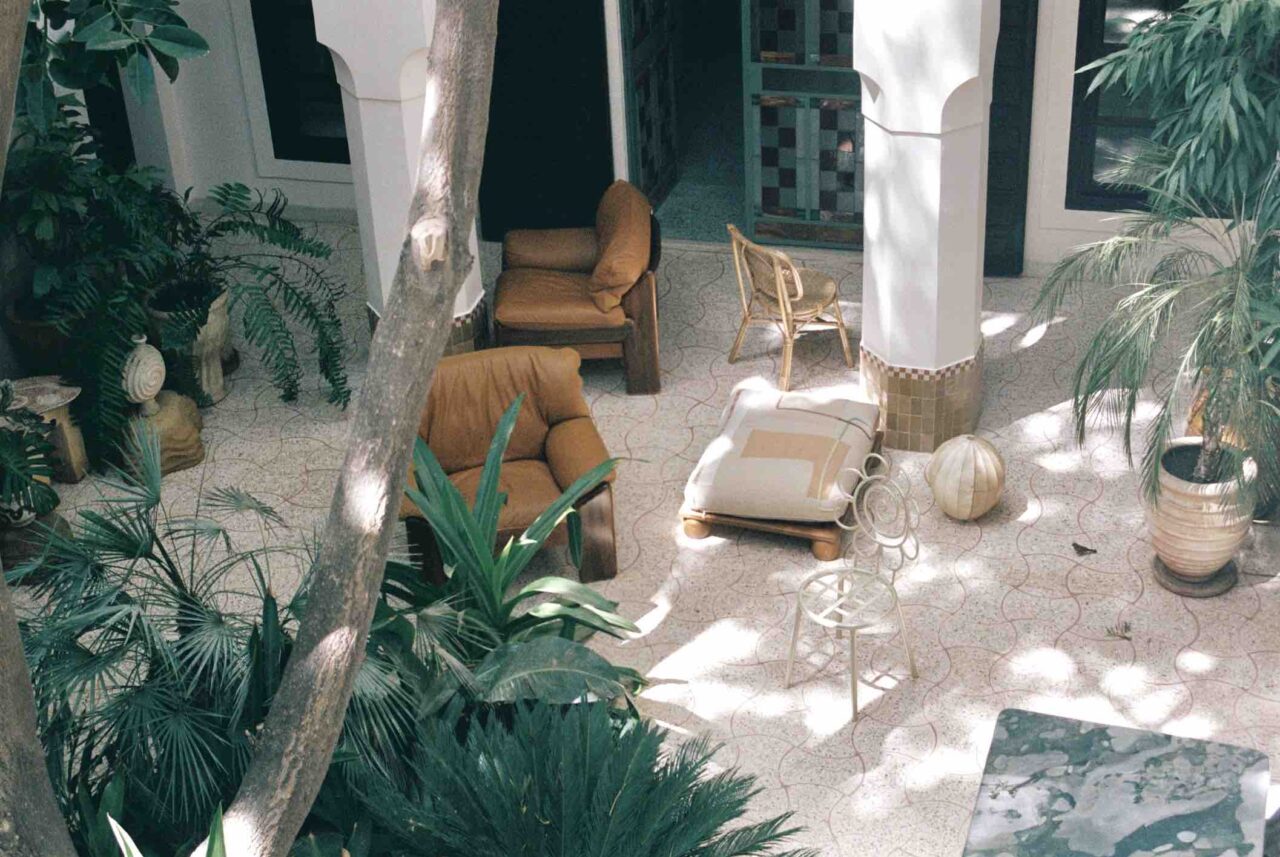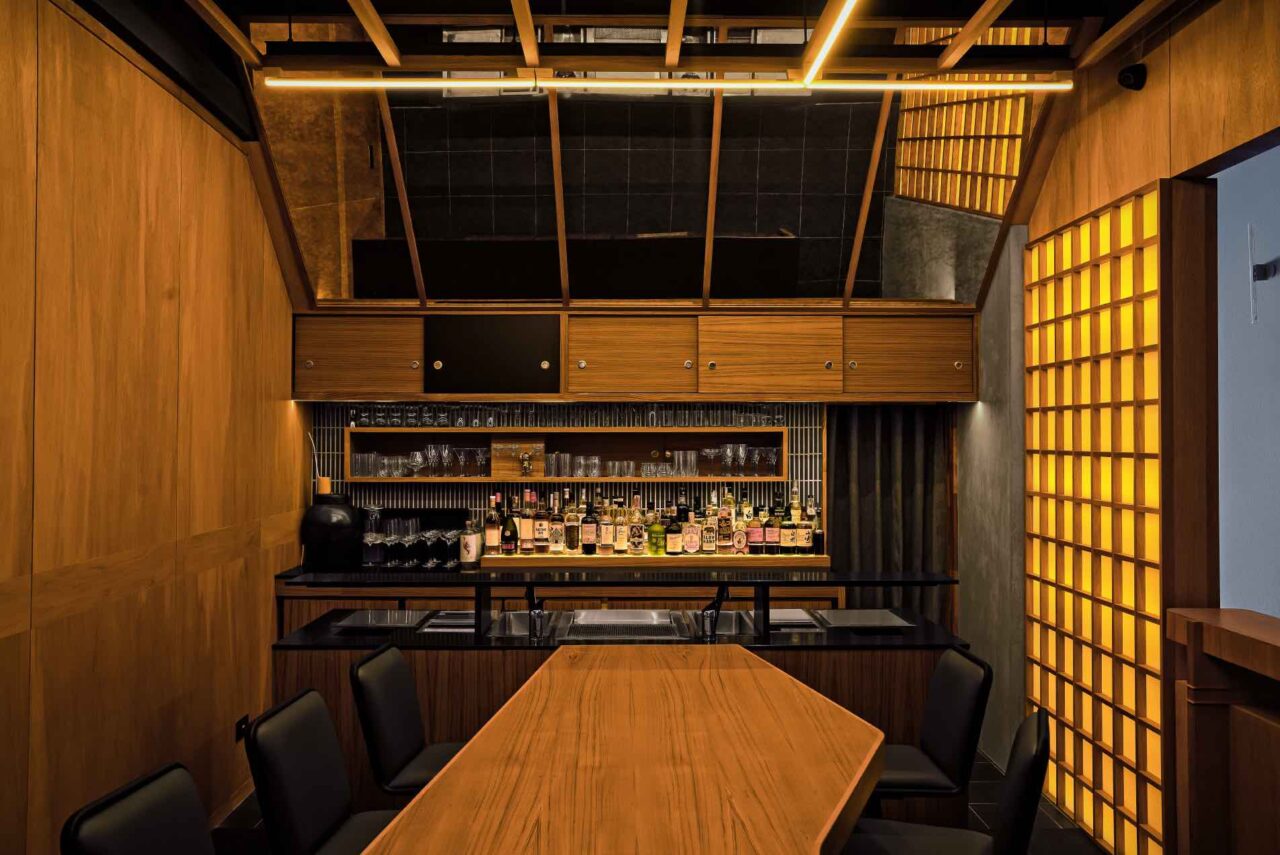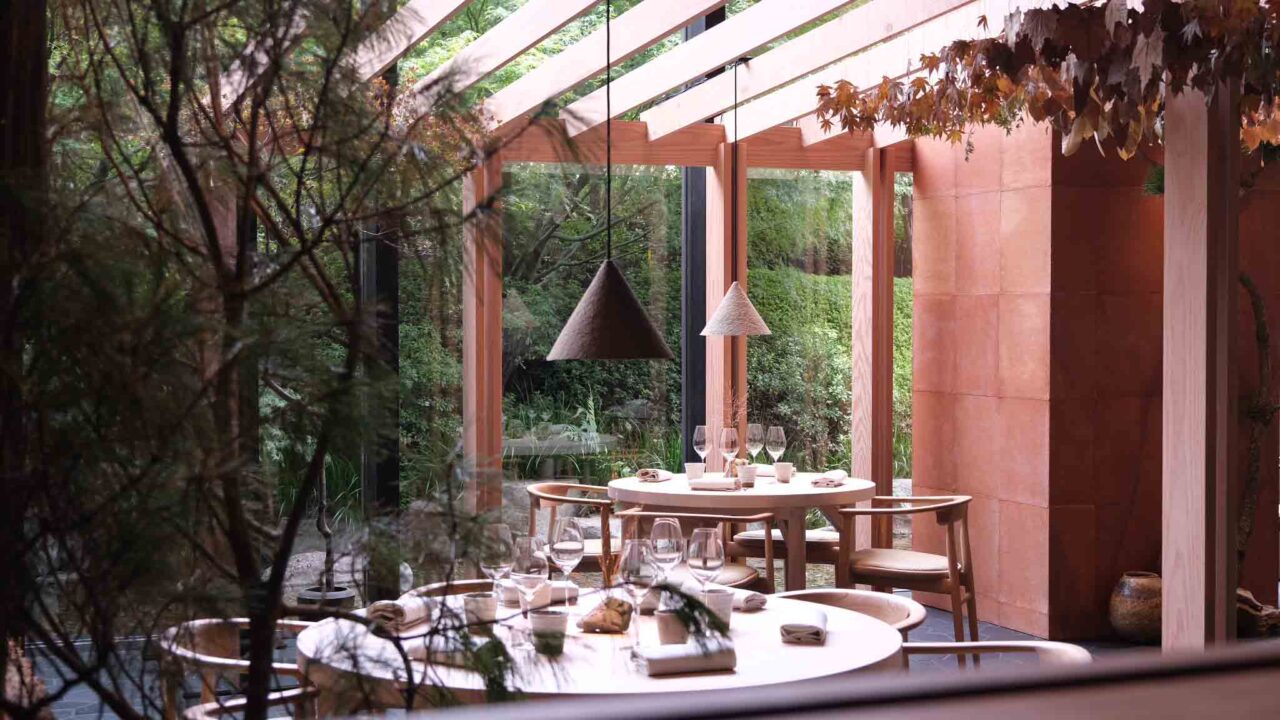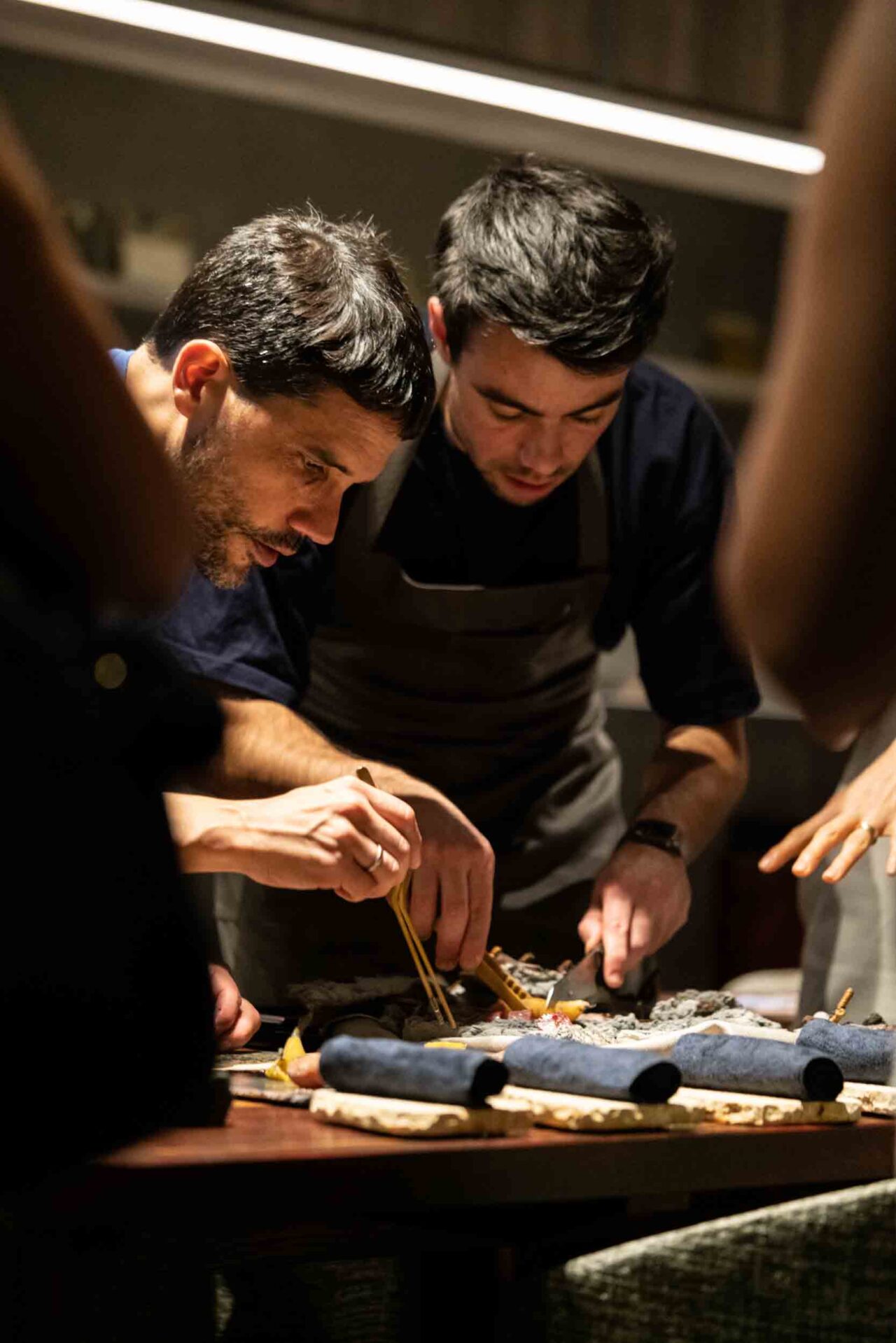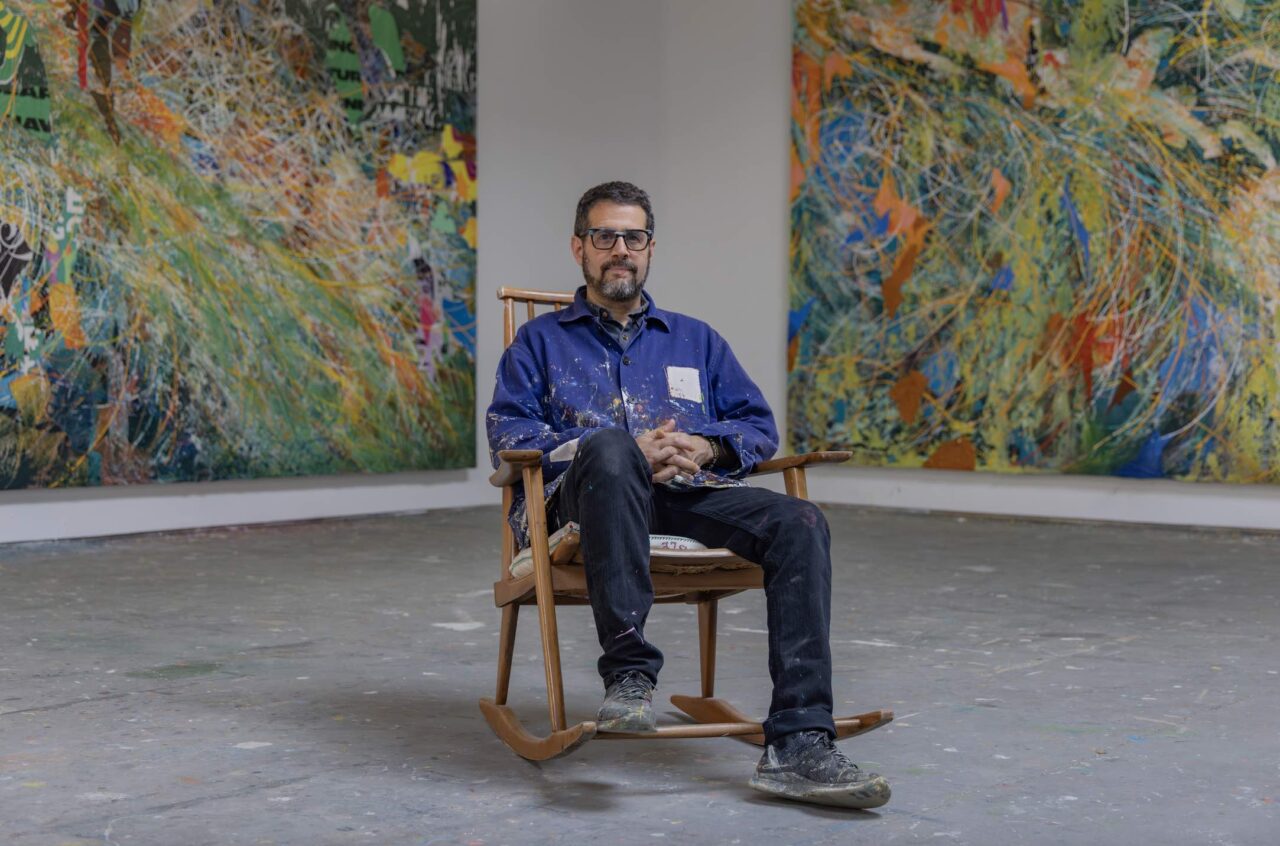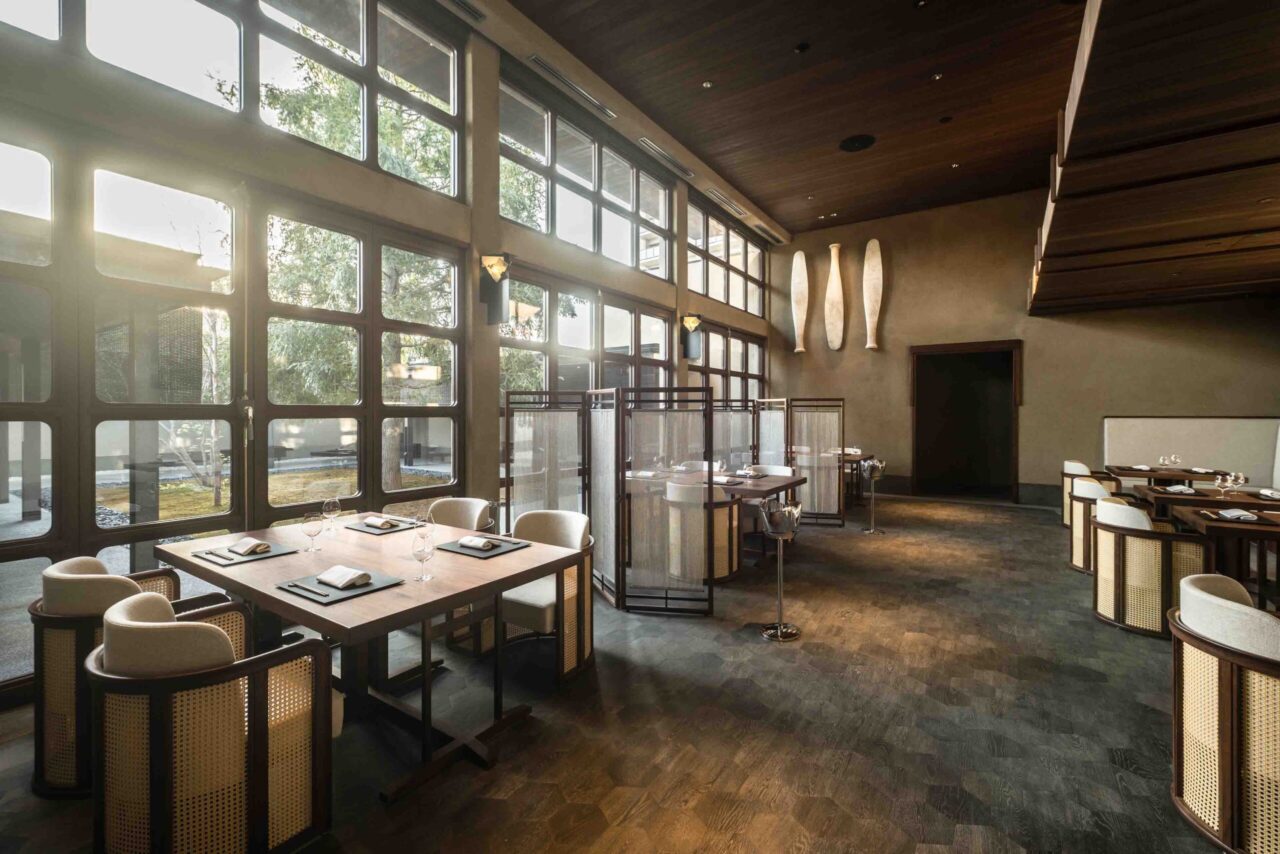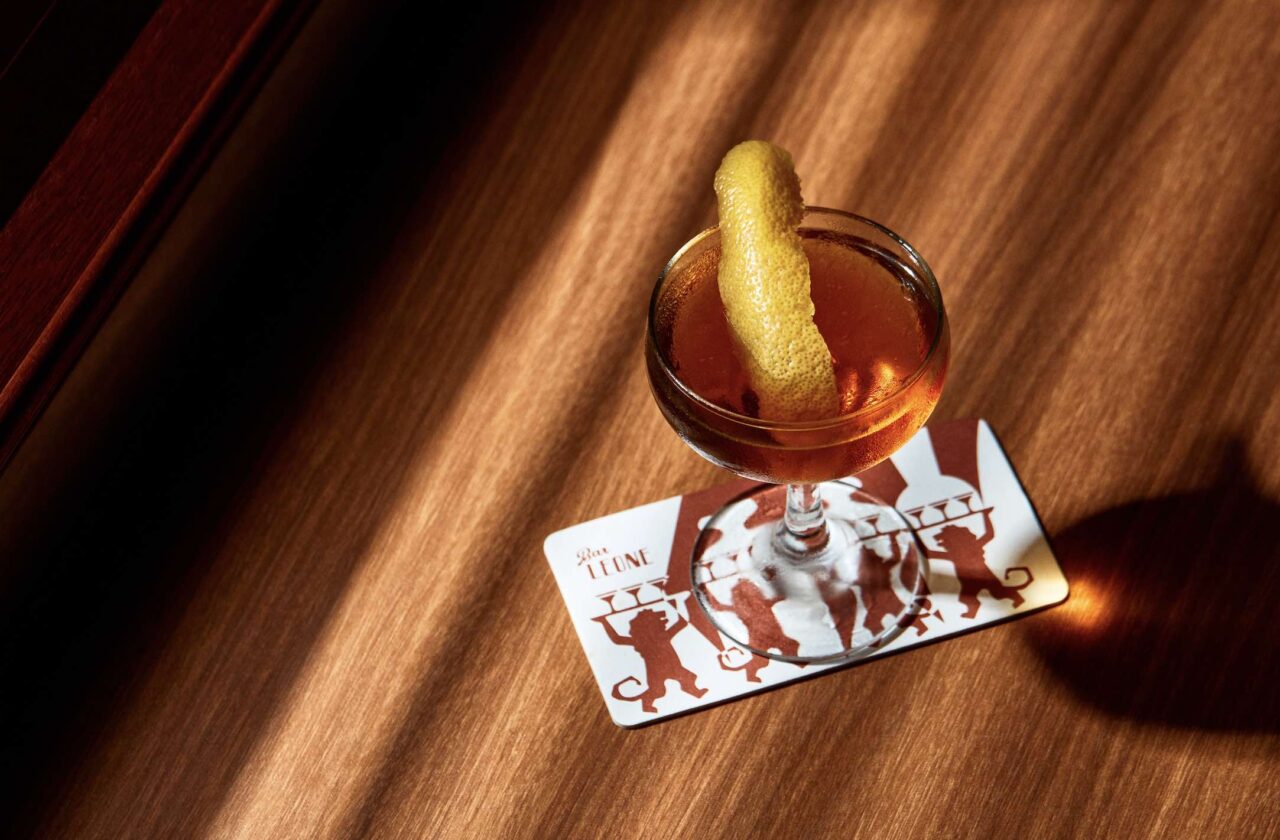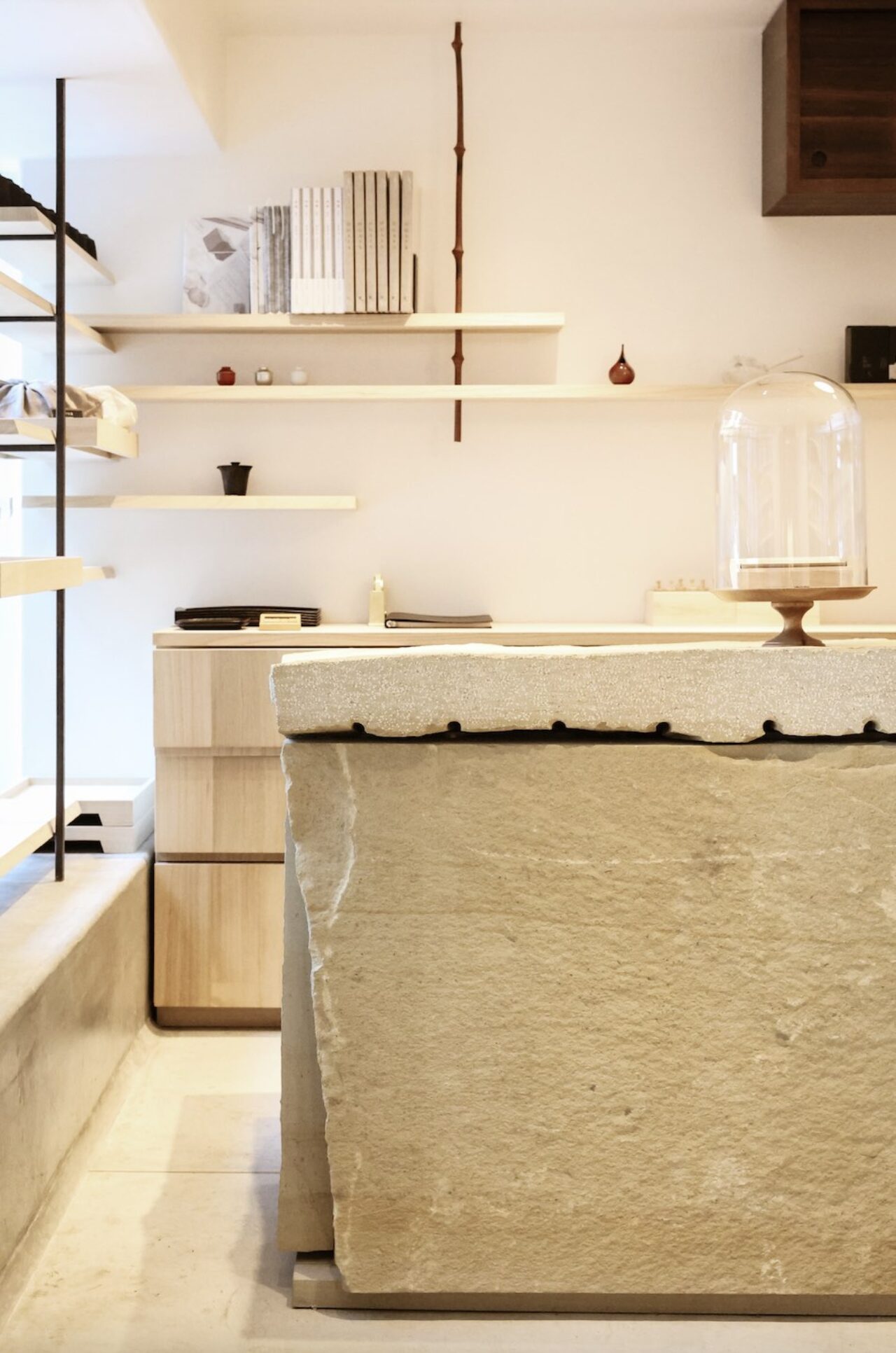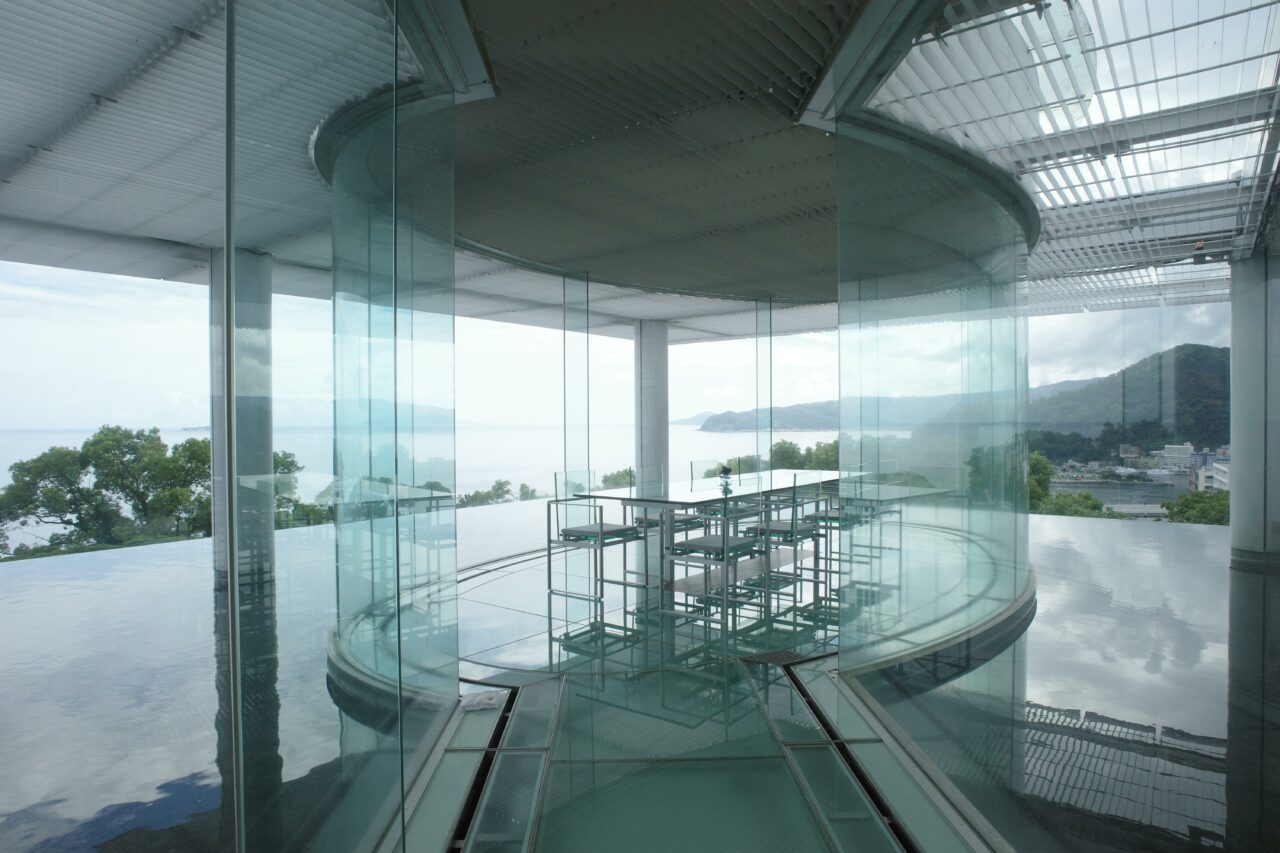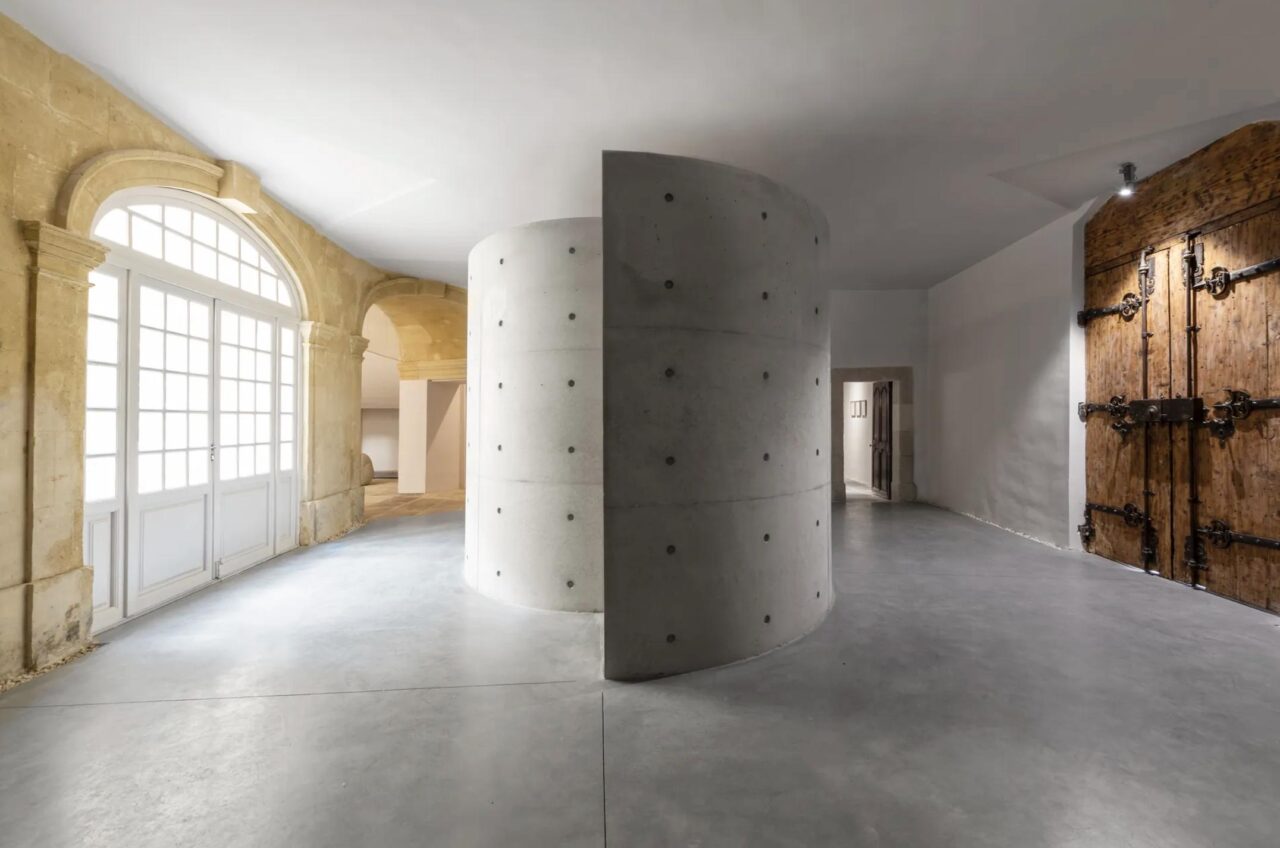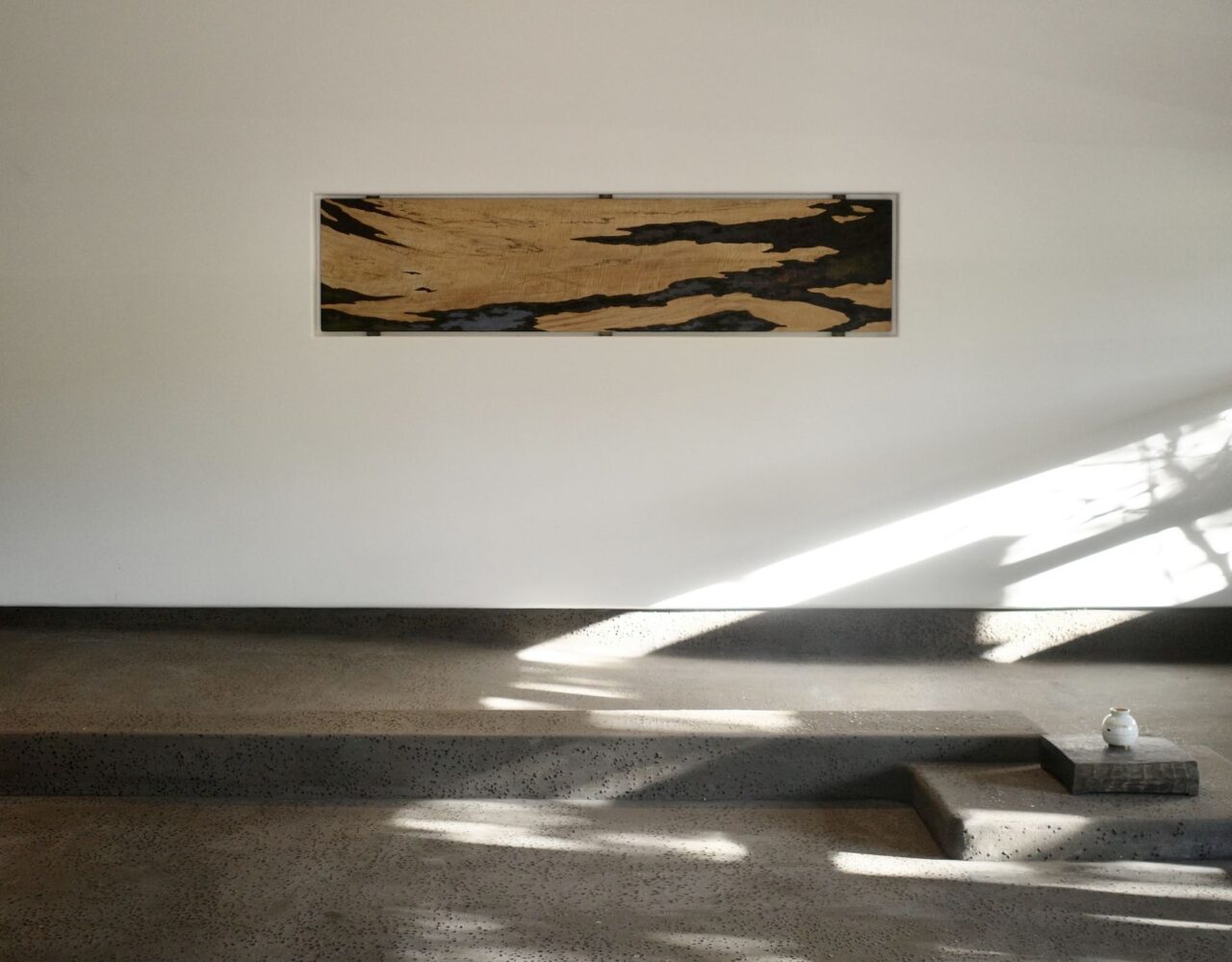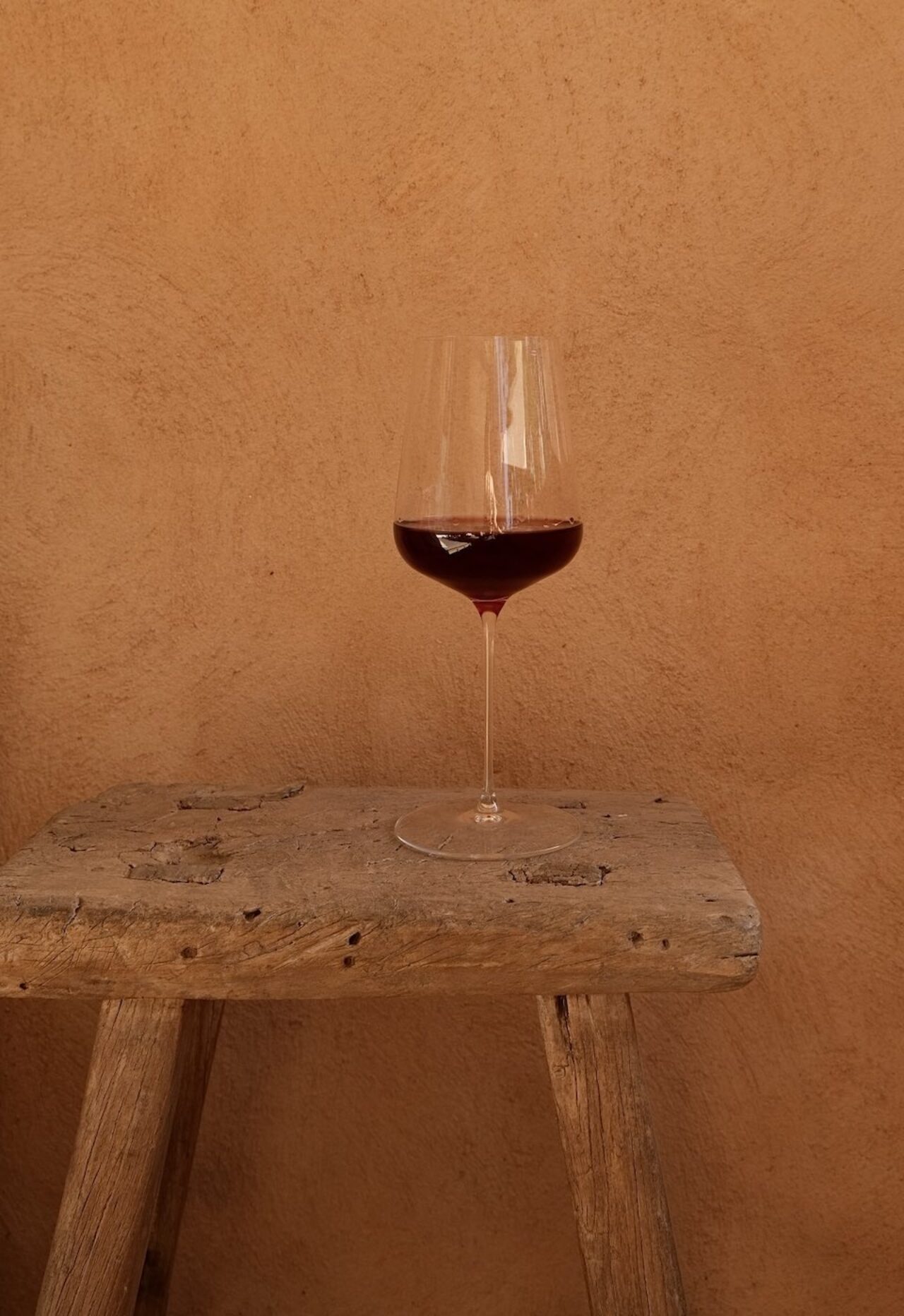Design in Mind for Italian Wine by Alberto Alessi
Alessi’s Home-Grown Biodynamic Wine and Its Iconic Bottle Inspired by Leonardo da Vinci

Set on the Eastern hillside overlooking Lake Orta in the distance, the vast view of the region is breathtaking. A modest, yet beautifully restored 18th century farmhouse in Pratolungo surrounded by vineyards indicates something special call this place home, with cascading vineyards in rows overlooking a breathtaking vista.
This is Cascina Eugenia, where Alberto Alessi and his wife Laura produce their biodynamic wine, La Signora Eugenia e il passero solitario.
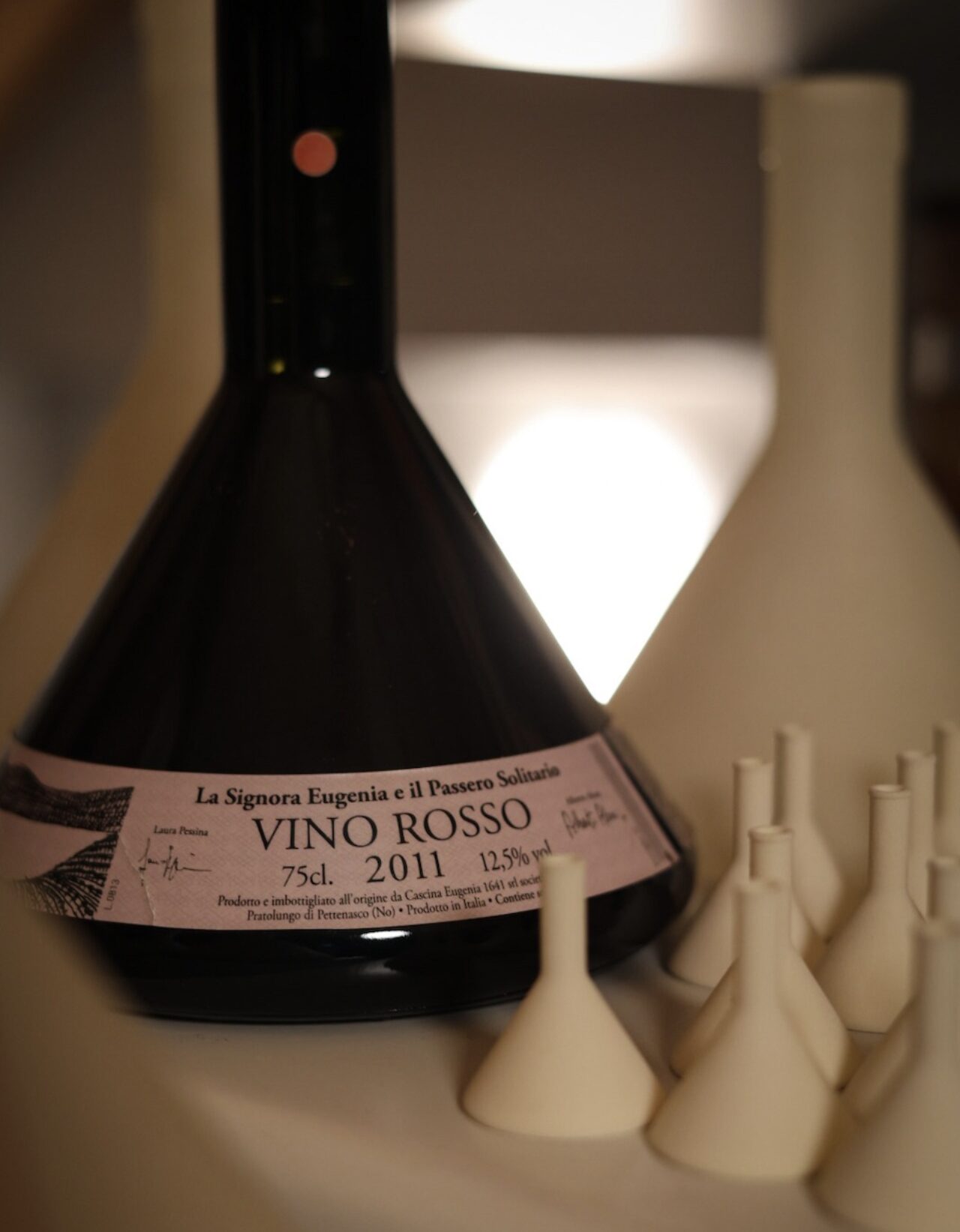
When Alberto came across the farmhouse in 2000, the fields on the property were completely wild.
The region has history of winemaking dating back to the ninth century, but now in the twenty-first, there are not any well-known professional operators in Piedmont. Alberto saw this as a challenge. Through his immense love of wine, he knew it would be possible to recreate the craft on his property. Cascina Eugenia, the restored 18th century building now operating as both a home and office, is surrounded by cascading vineyards growing Chardonnay and Pinot Noir (all aged in French oak).
The area in Pratolungo had been producing wine for centuries there, but stopped one century ago, when phylloxera destroyed the vines. With the help of Alberto’s friends, he was introduced to a biodynamic farming expert Jacques Mell from Reims whom guided the Alessi’s on their wine-growing journey.
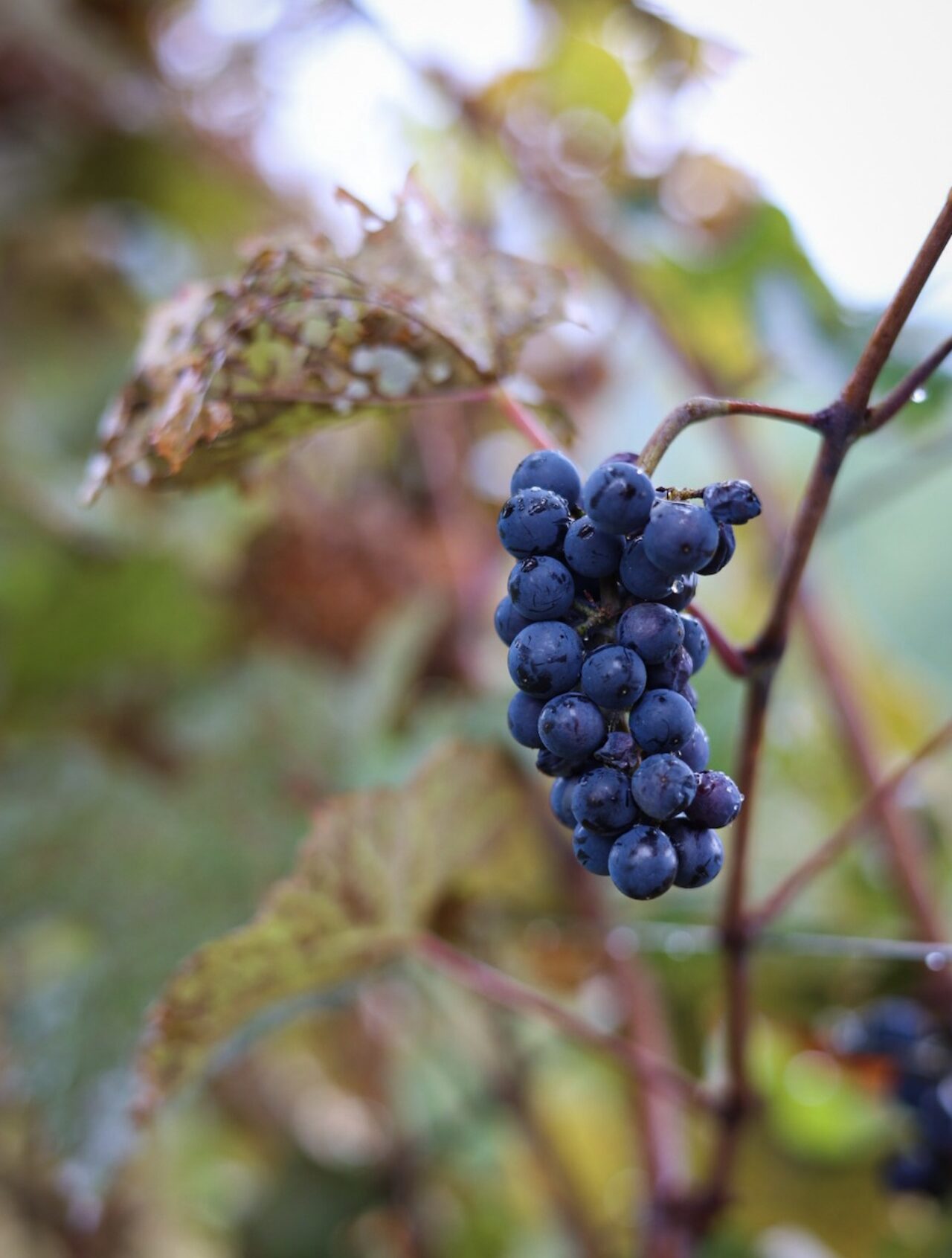
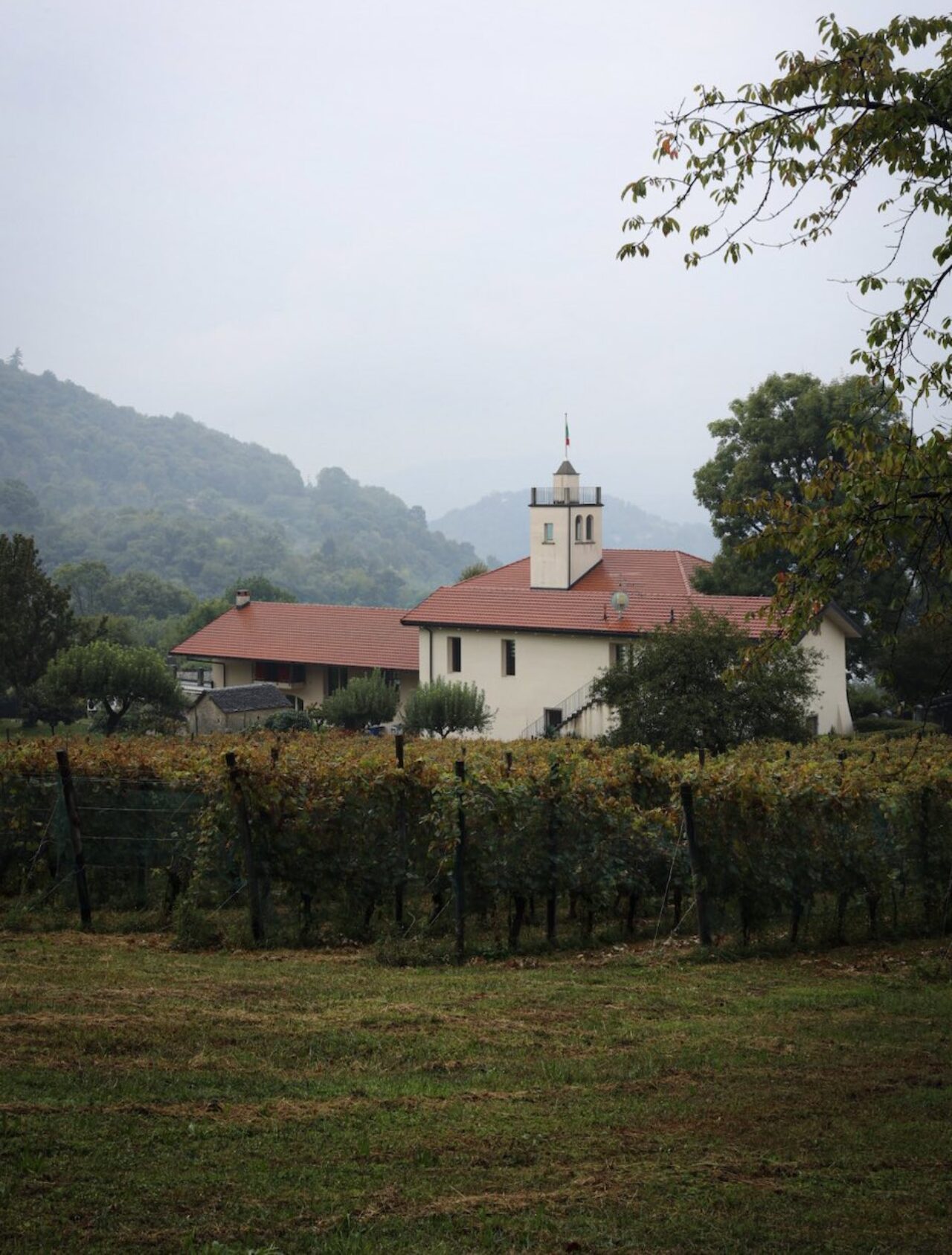
The cooler temperatures and heavier rainfall during the year means grape-growing requires more attention, but the terroir? It is nourished and fertile, both due to the rains and the Alessi’s biodynamic farming.
Operating biodynamically means “no work on the Earth, you must leave it as” explains Alberto as we walk through the vineyards with him on a cloudy day in April. It’s fresh, with slight droplets of rain which encourage me to carry an umbrella as we walk. Alberto Alessi, the head of Italian design brand Alessi, embodies the practical, playful, high-end design brand he leads, respecting craftsmanship yet always seeking more, curious and innovative. He’s cool, calm, collected as we stroll through the vineyards on his property; cigar in one hand and Italian gestures in the other.
He requires no umbrella, he is at home here as he should be – embracing the weather as his surrounding environment and grapevines already do.
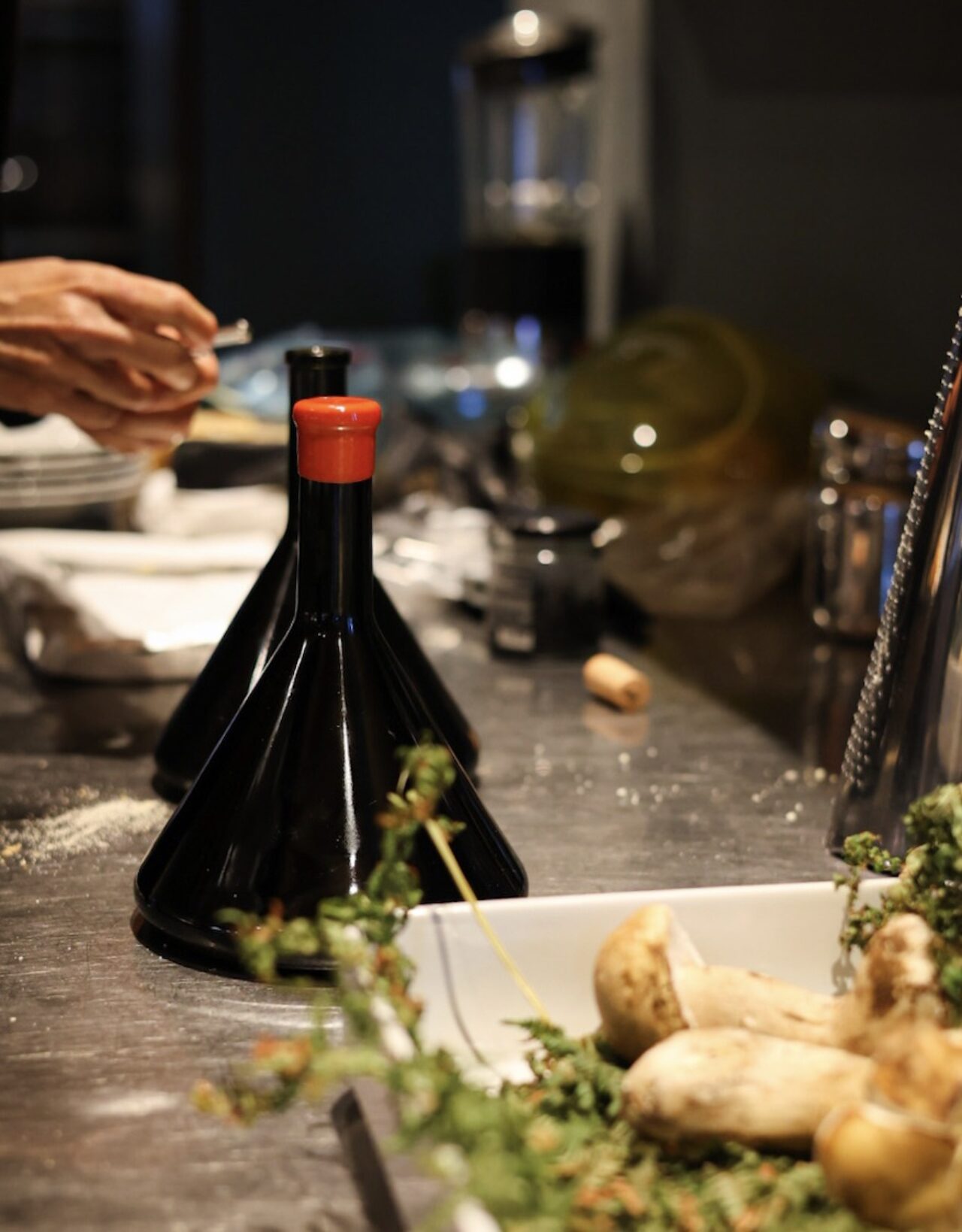
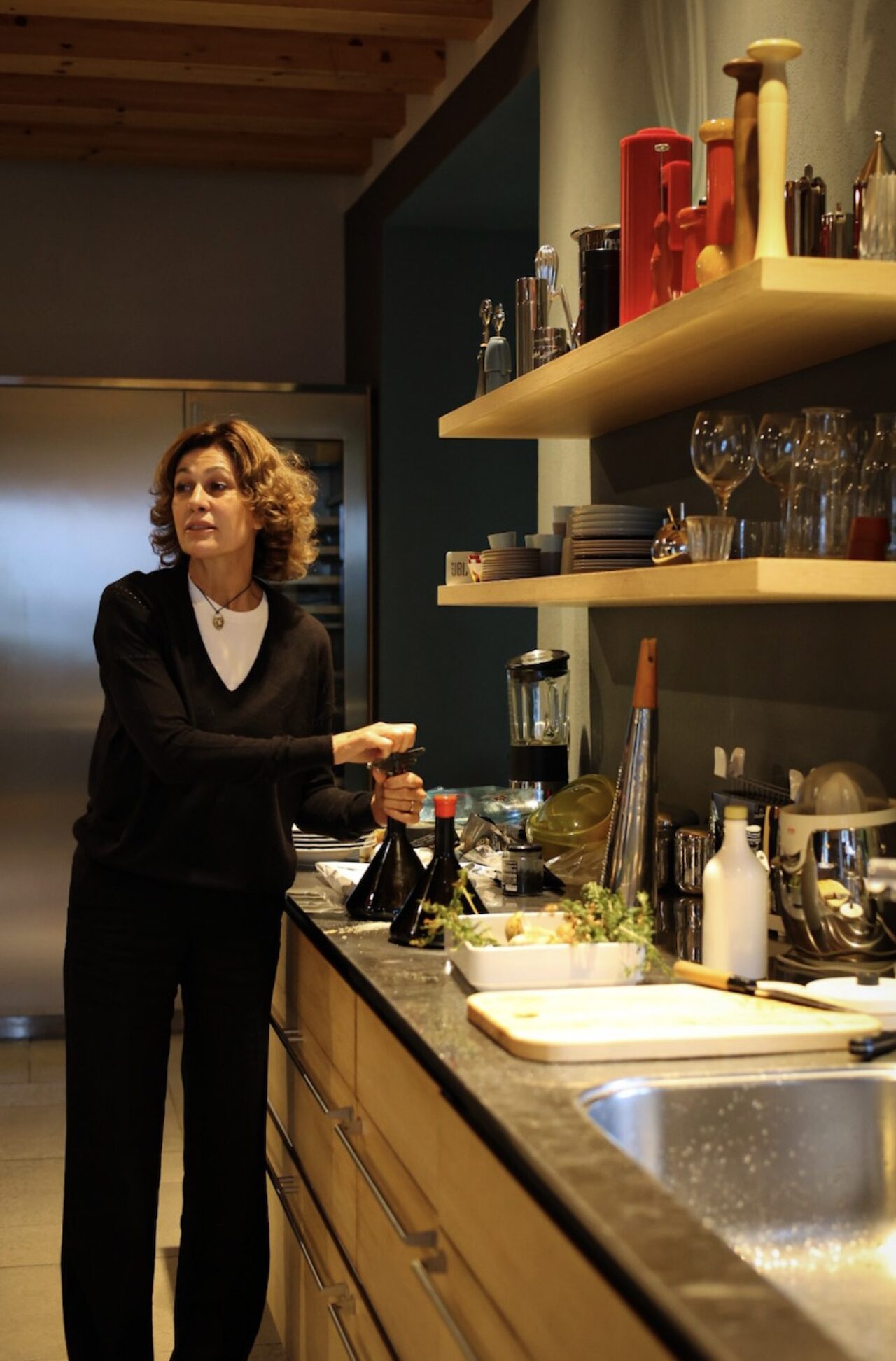
With the climate constantly changing, each season brings new cycles of the grape flavour profile and added experience of the winemaker. It’s the beauty of being a farmer, constant optimism and problem solving, always moving closer and closer to perfection.
Created by Alberto himself, the conical glass bottles for the wine were inspired by Leonardo da Vinci’s Vitruvian Man and entitled ‘Leo’. Intended to be reused after consuming the wine, the bottles are iconic and memorable, designed to not be thrown away.
Our visit to Alberto and his vineyard was actually inspired by the bottle design, a curious and unique form that immediately catches the eye. During a studio visit to Japanese industrial designer Naoto Fukasawa’s Tokyo atelier, Champ Editor In Chief Joanna Kawecki enquired about the striking bottle sitting atop a kitchen shelf, leading us to Alberto and La Signora Eugenia e il passero solitario.
Alberto describes this creation process as “the ‘Leo’ bottle is not really a design made by me, neither by Leonardo: it was just the result of a long passionate historic research on small containers to keep and to serve wine.” Catalan designer Marti Guixe developed the identity, logo, labels and packaging for the brand, with labels presenting a lady looking towards the lake with a sparrow on her shoulders (also drawn by Guide). Anna and Gian Franco Gasparini designed the wine rack designed specially for the bottle’s conical shape, stored horizontally for a reason: to keep the cork moist and prevent air from getting into the bottle.
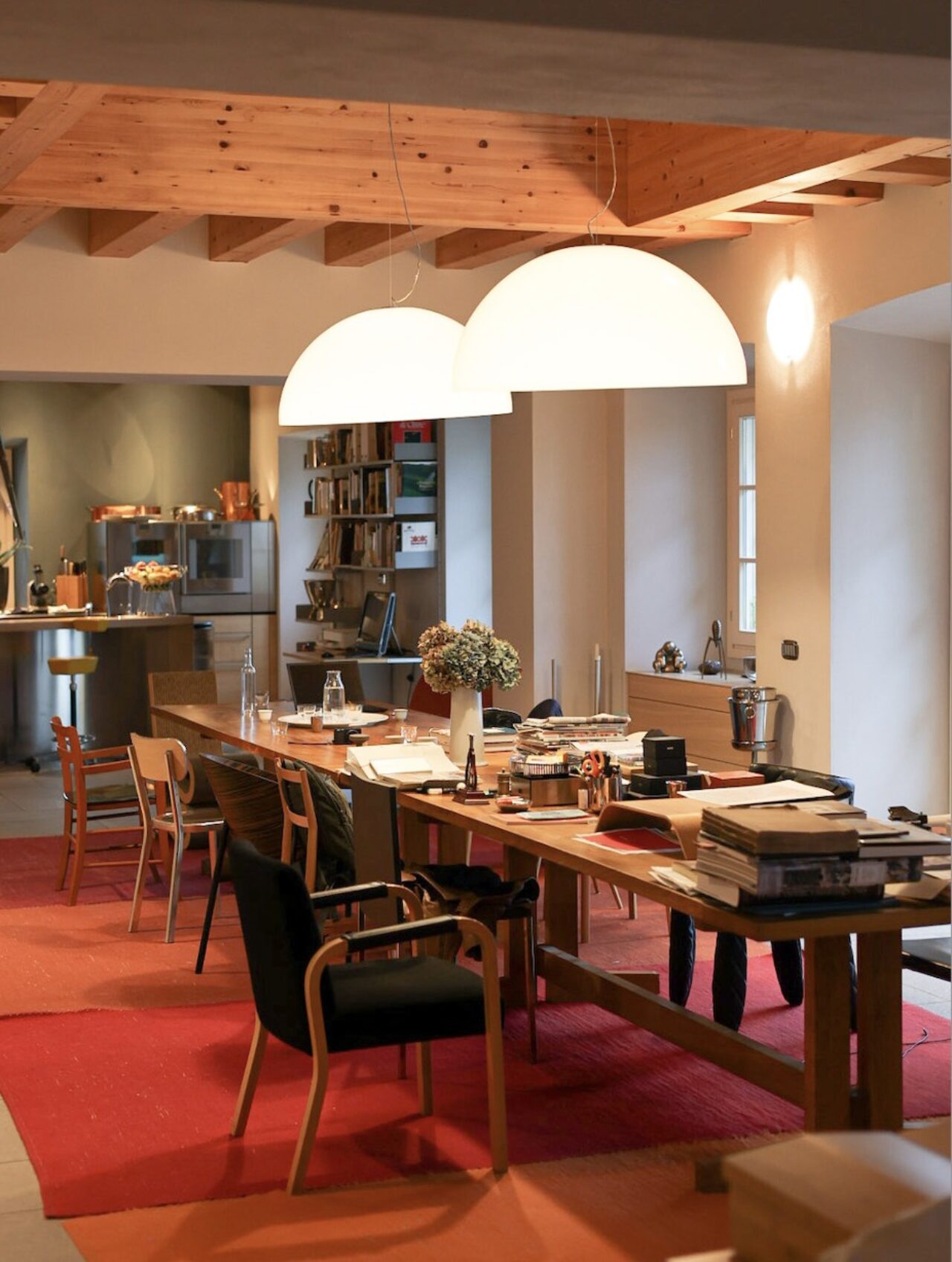
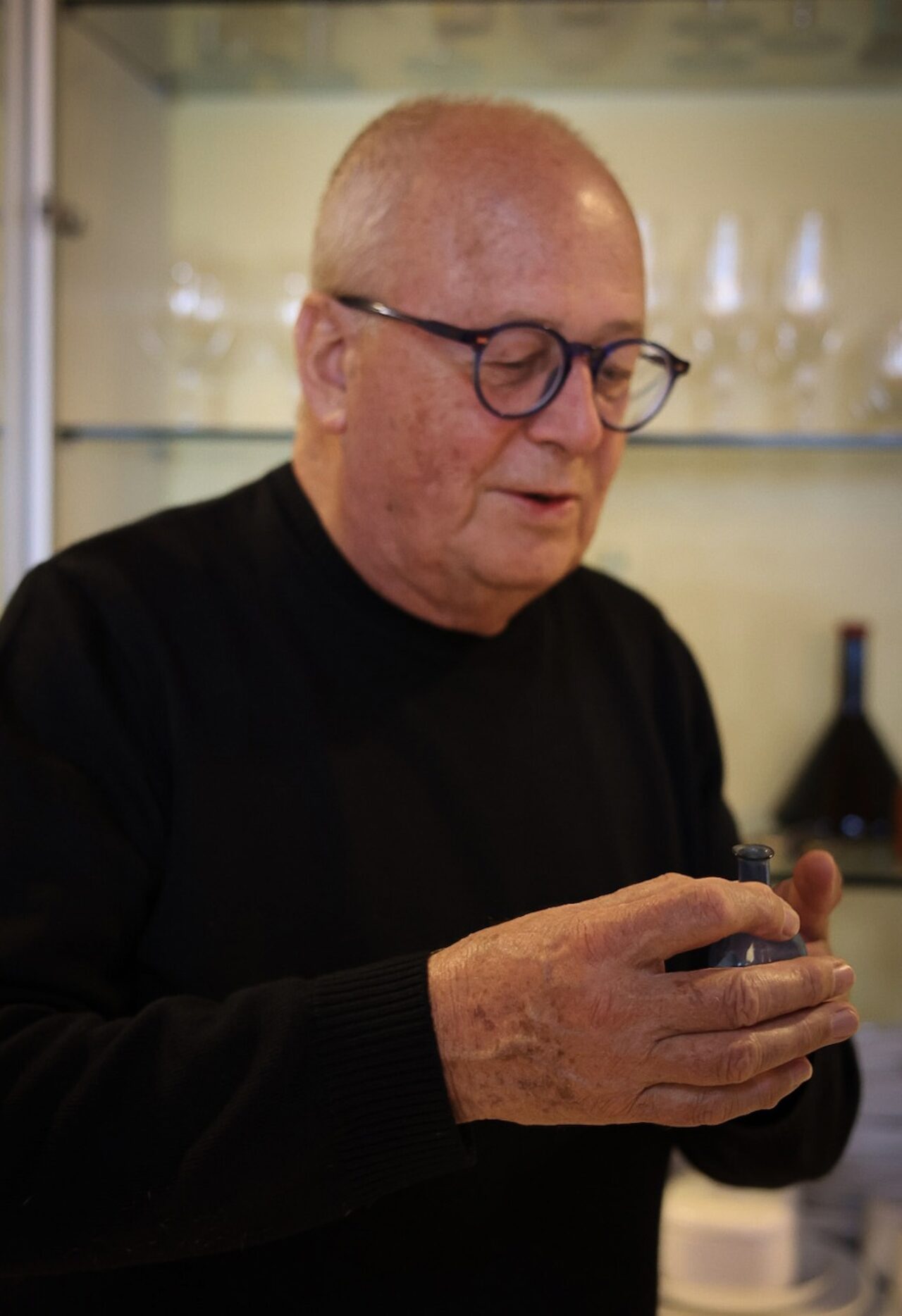
At first hand-blown, the very unique ‘Leo’ wine bottles were changed to factory production to ensure consistency in shape and stature. Early hand-blown bottles had slightly rounded bases which made them unstable. Now machine made, the pattern on the bottom of ‘Leo’ references Leonardo da Vinci’s knots, one of his favourite decorative motifs which appear in many of the artist’s paintings and in today’s mass production, prevents the hot glass from sticking to the conveyor belt.
First hand-picking the harvest, then transporting the grapes in small batches to the cellar, they are then pressed and put in vats and barrels for fermentation. Wine is then hand-bottled by Alberto, Laura and their friends in the ever-elegant bottles during their production day. It’s indeed an Italian tradition, preparing and bottling seasonal vegetables. where the whole family gets involved. There’s an energy and authenticity to this, the gathering of family to create something they will enjoy the rest of the year. With La Signora Eugenia e il passero solitario, Alberto and Laura are sharing this also with their global design community and wine afficionados alike.
With one staff member full time and another part time, Laura primarily manages the entire operations from their Lake Orta base.
At 150m above sea level, there are no other vineyards in the area. Does this give the Alessi’s an advantage? Time will tell, but for now, they’re having alot of fun with it.
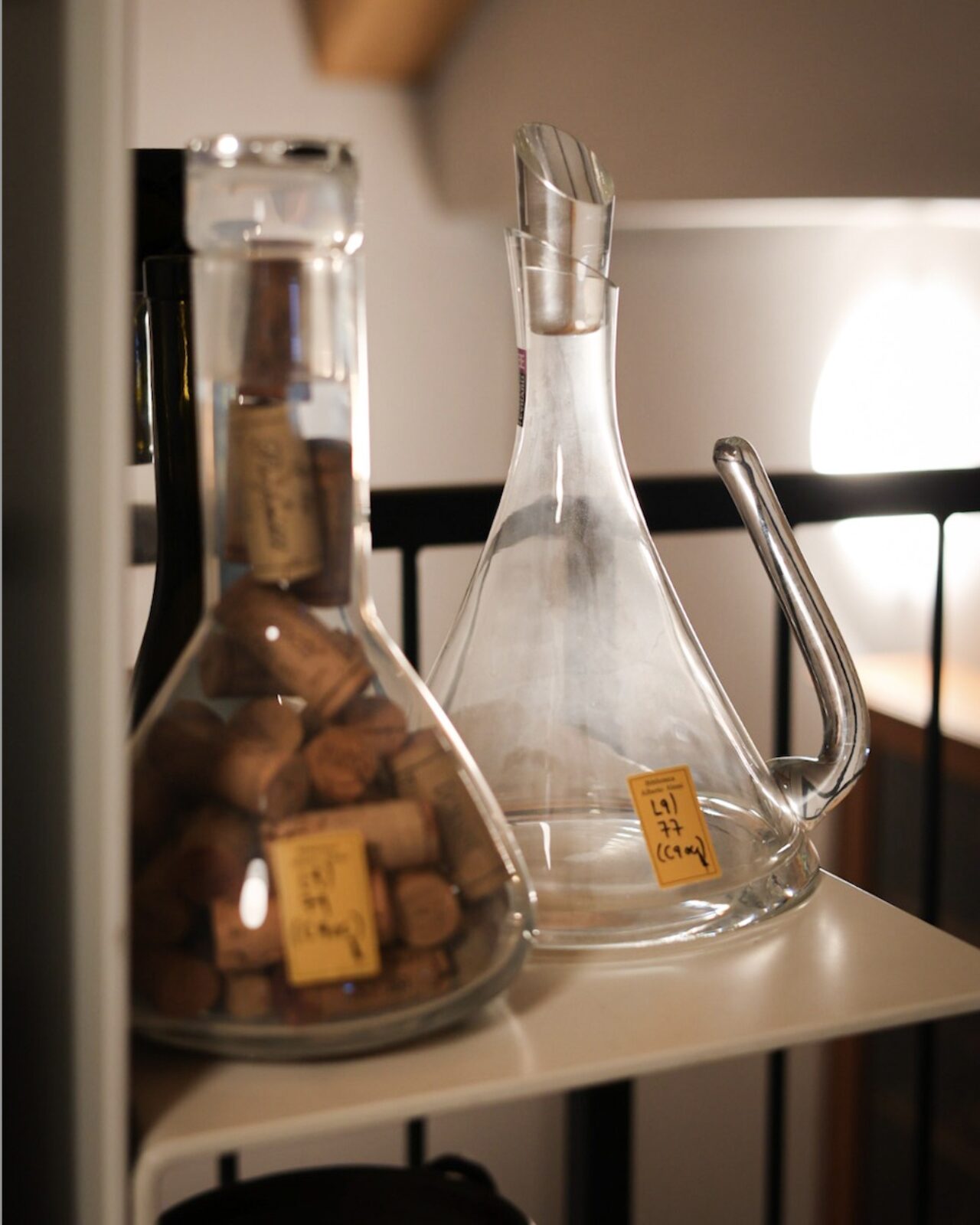
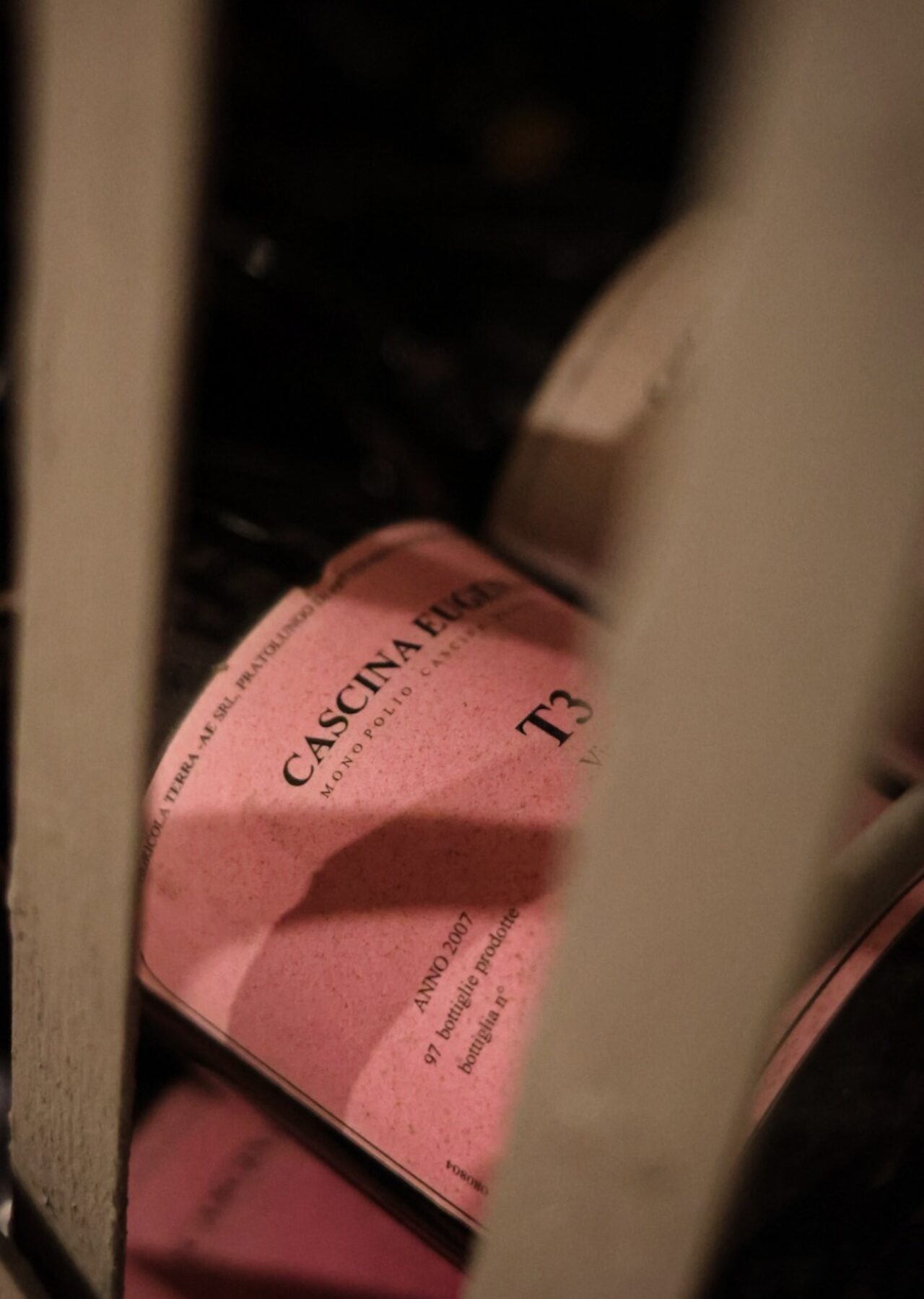
Transforming his family’s company – Alessi – into one of the most influential design brands in the world, Alberto has a careful consideration to design. He took over leadership of the company in the 1970s and shifted its focus from purely industrial production to design-driven manufacturing, collaborating with some of the world’s most famous designers and architects, such as Philippe Starck, Ettore Sottsass, and Michael Graves.
Through his leadership, Alessi became known for its playful yet functional kitchenware, home accessories, and tableware, blending art, craftsmanship, and industrial design. He pioneered the idea that everyday objects could be both useful and artistic, making high-end design accessible to a wider audience, transforming and elevating day-to-day experiences with good design. When he embarks on contemplating a new product to manufacture, he runs it through a carefully devised set of self-made metrics, ‘The Formula’ as he calls it. Measuring points such as beauty, function, price and communication language; how a product conveys ‘value’ in culture and status.
My partner, Alexander Lotersztain, shares that Alberto once bought a rocking chair that he designed. Alberto, sharp and ever the gentleman, gestures over to one of the home’s entranceways and presents the rocking chair on show. Gracious with his preparation, Alberto’s reputation precedes him, he is supporter of good design and the designers behind them. It’s a wonderful exchange, one that I would lay to rest for a few years after the visit.
Now, he’s also applying ‘The Formula’ to his wine brand. “I love wine so I wanted to see what I could do in that field on my beloved Lake Orta” explains Alberto.
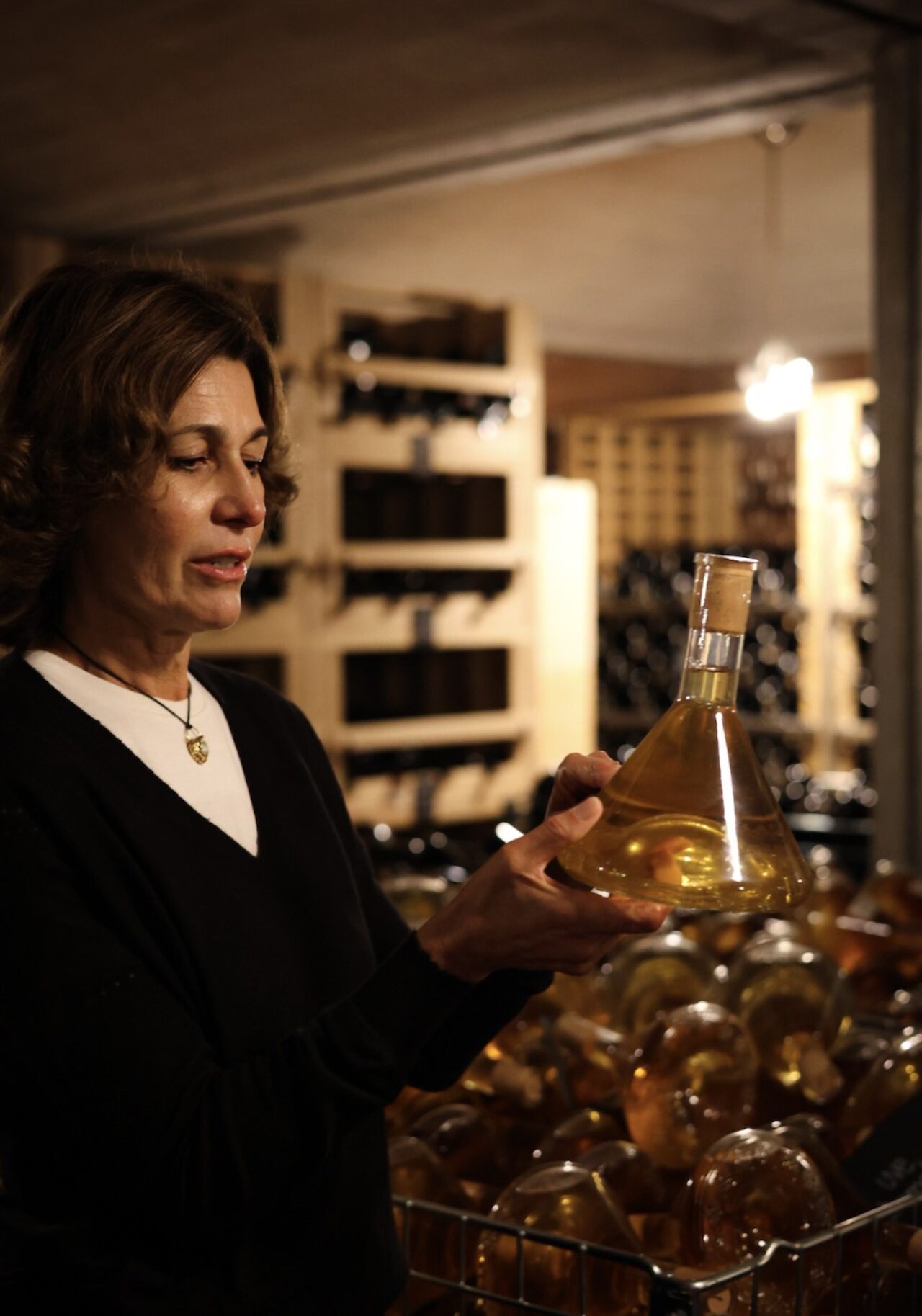
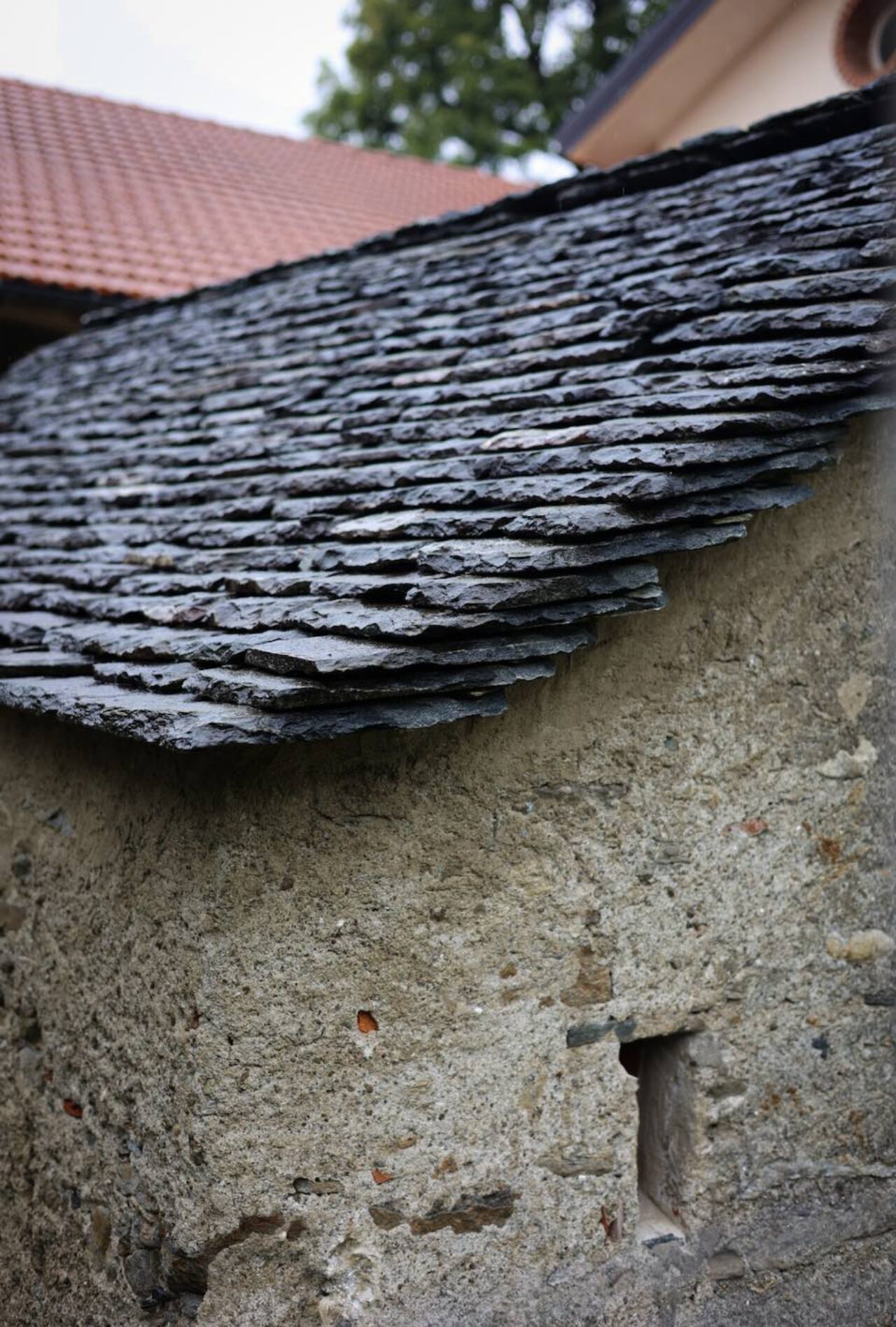
Craft – just like Alessi’s products and Alberto’s wine production – is timeless.
After departing Cascina Eugenia, the world of wine-making unravelled even further for me. From old world wines to pioneering natural wine-making, la signora eugenia e il passero solitario is a charmingly original venture amongst it all. The life of a vintner looks good on Alberto and Laura.
‘Il passero solitario’ means the lonely sparrow, and although they are the only wine-growers in the area, by default they have something unique to share already. To be the lone sparrow, the first adventurer, it can present an advantage. With their biodynamic farming principles they are looking after the land they reside on, and their families health, and this is already a success of sorts.
With limited edition, small-scale production and traditional wine-making practices to make the magic of this brand, the original wine bottles in an impossible-to-forget design are the cherry on top. Alberto continues to evolve every-day design objects into something new, and now circular, both in production and consumption. Art and design combine for this centuries-old craft of wine-making through founders Alberto and Laura Alessi’s trail-blazing vision.
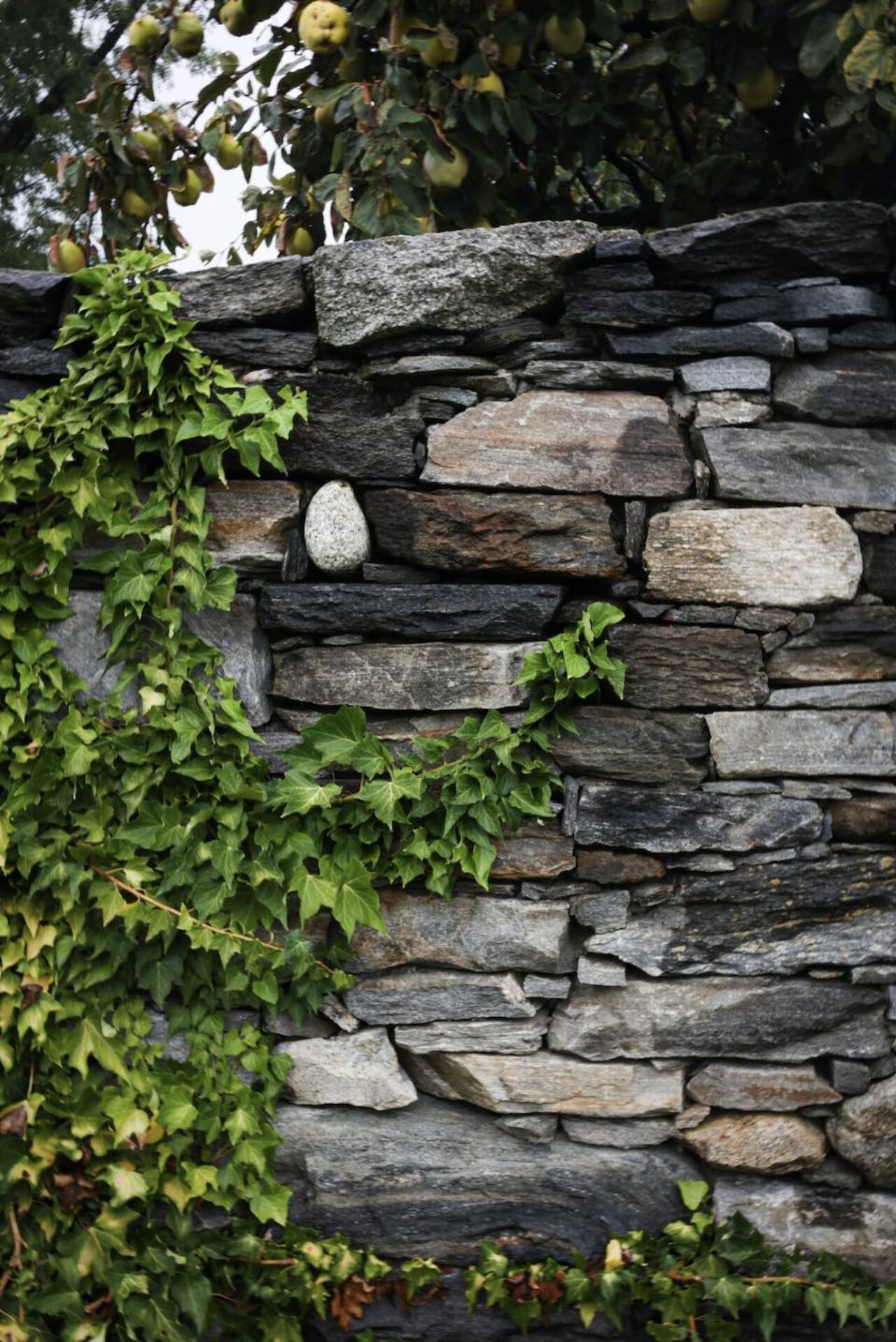
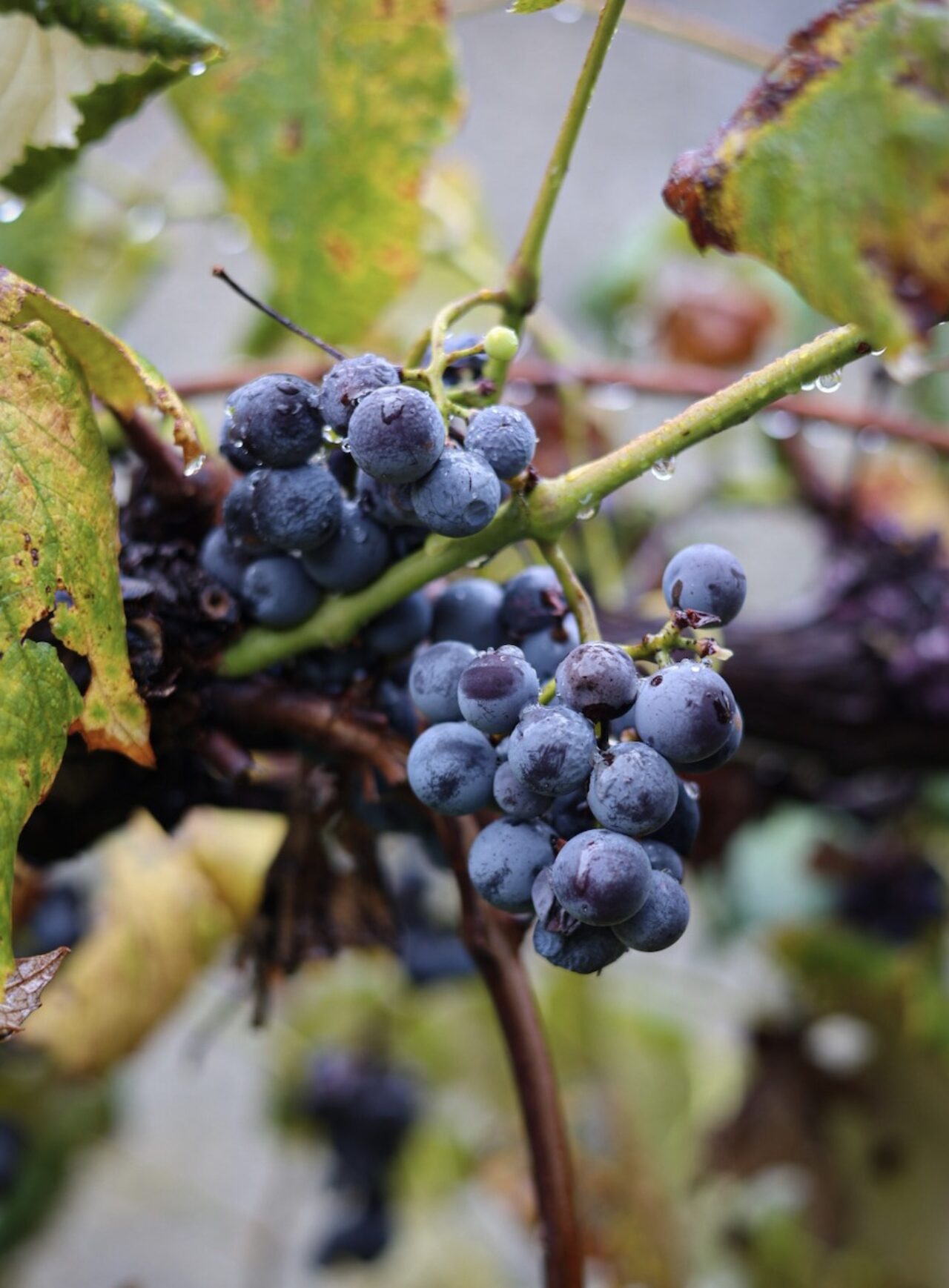
Discover, order and taste La Signora Eugenia e il passero solitaire, click here.
Text: Editorial Director Monique Kawecki
Images: Champ Creative©


